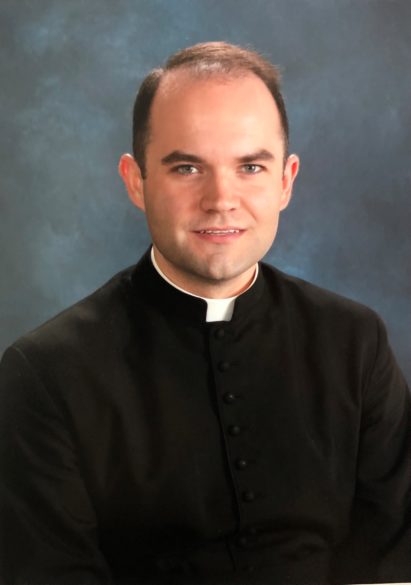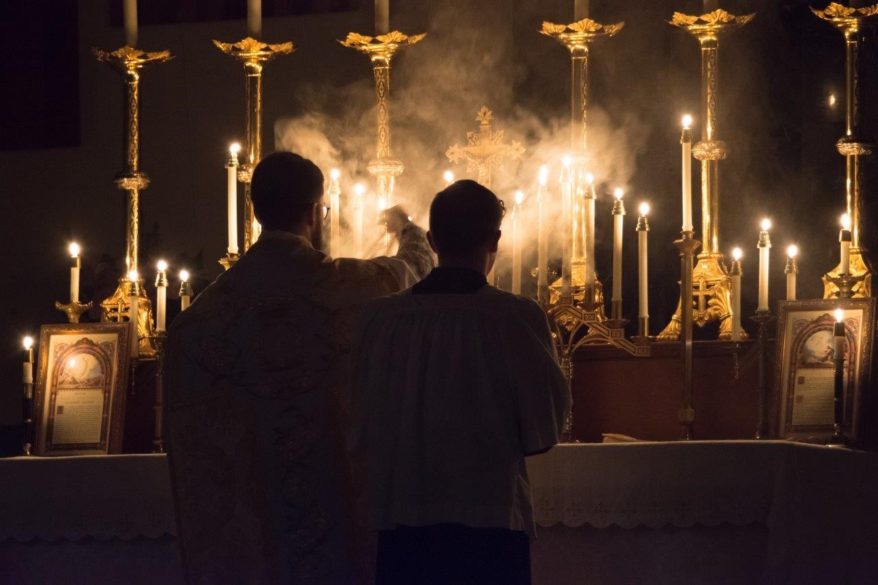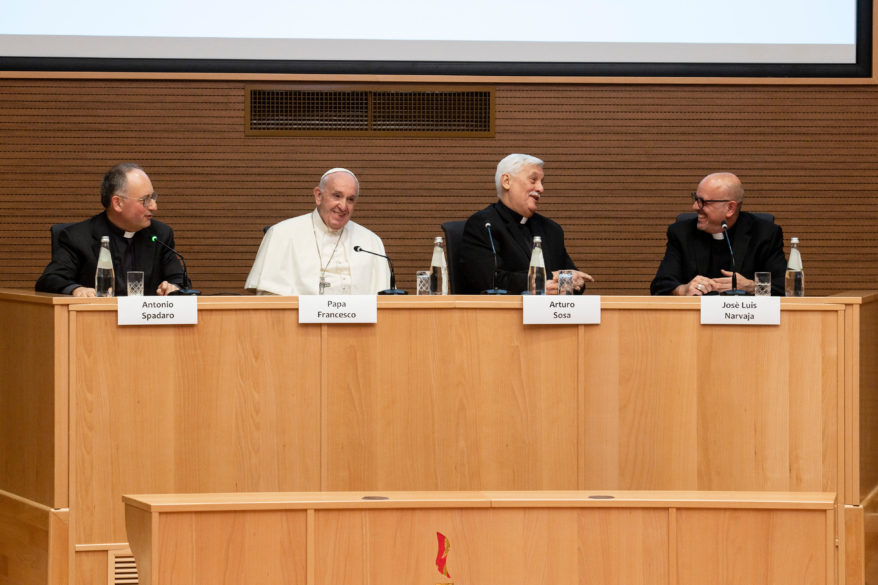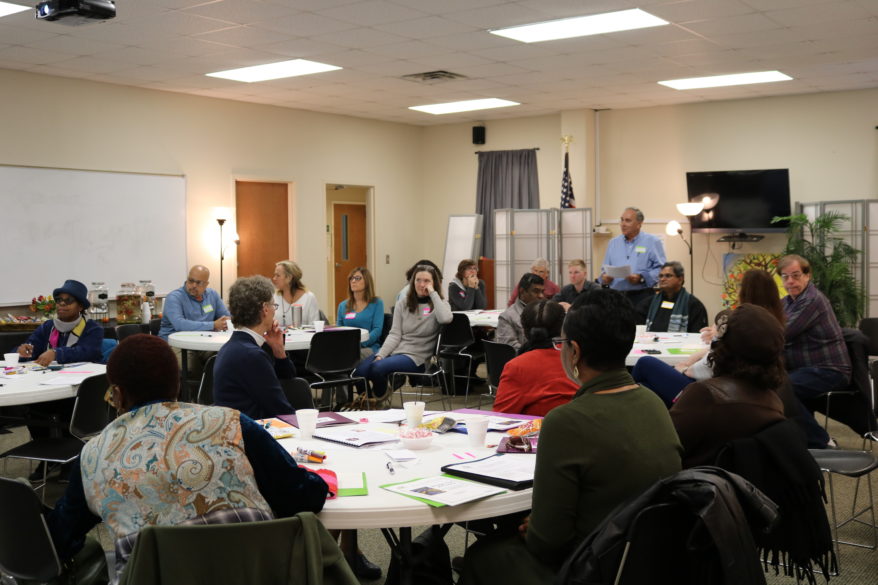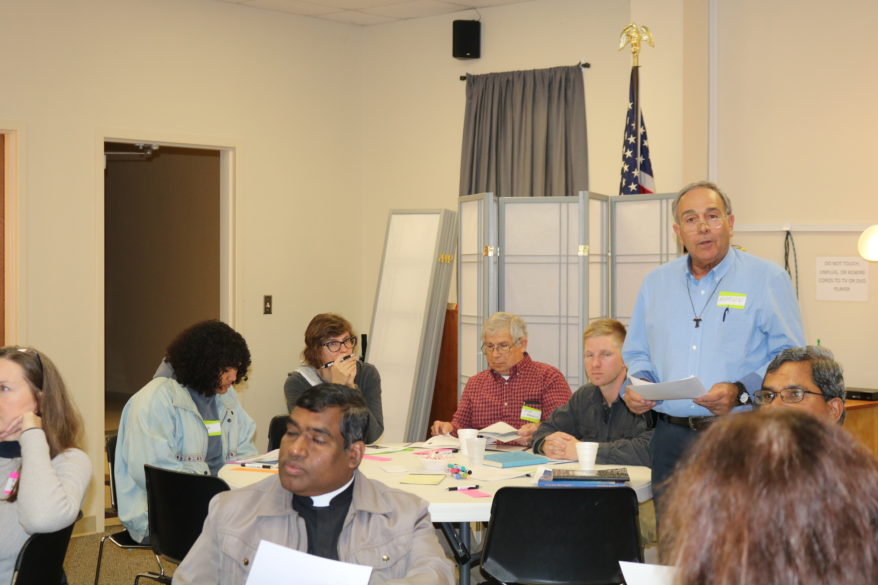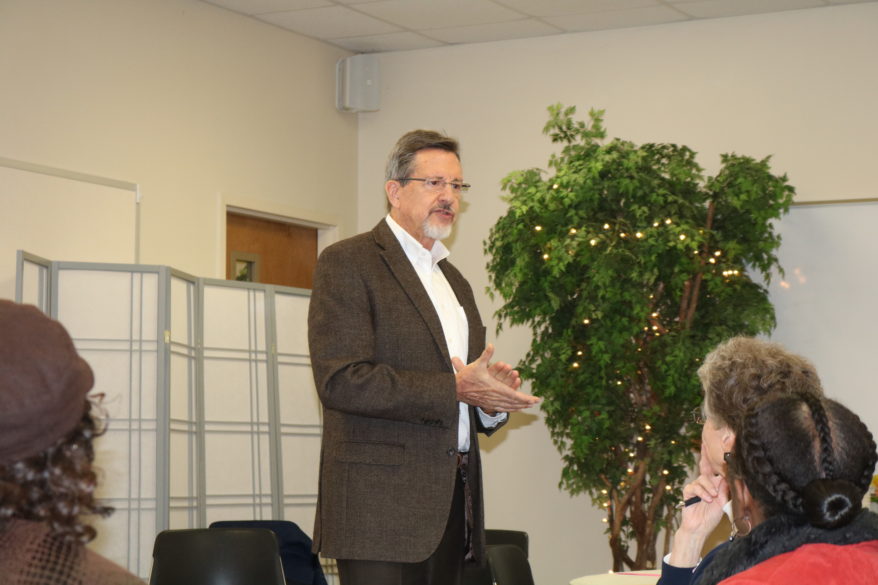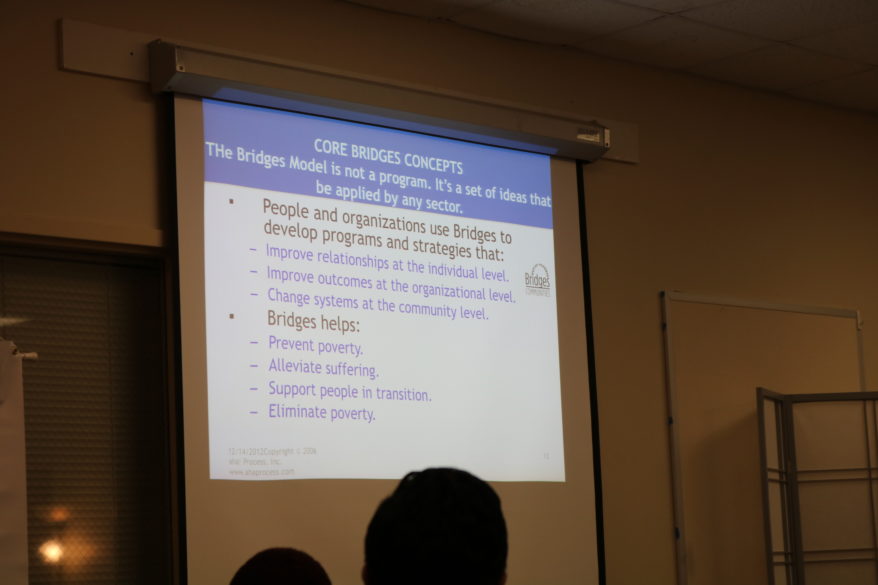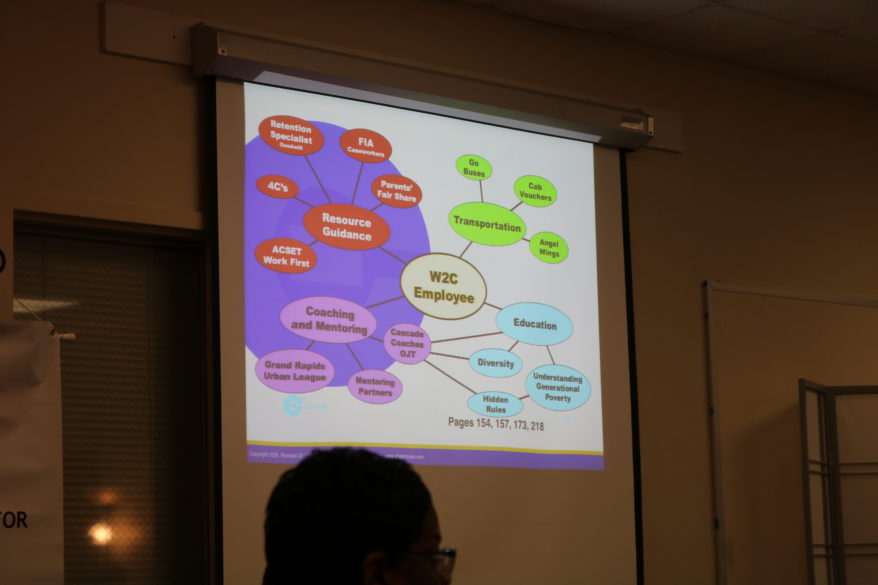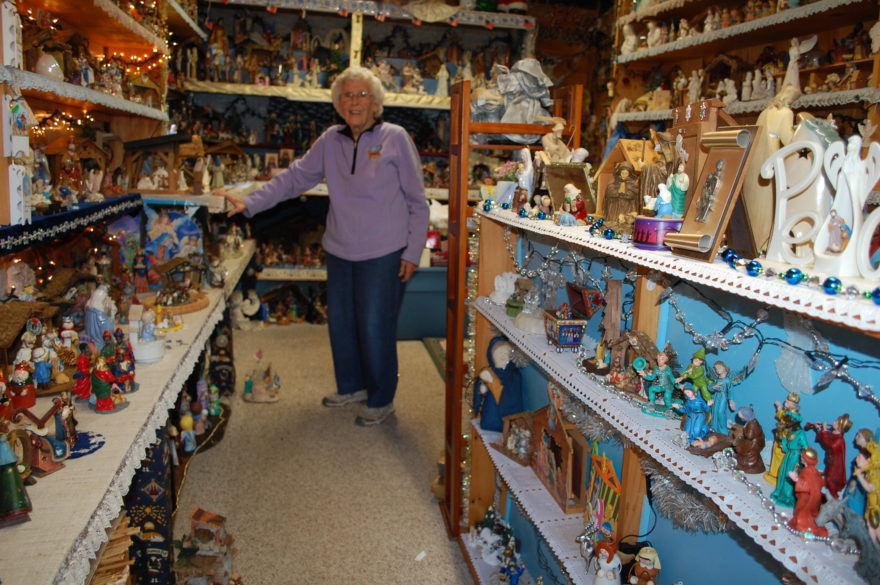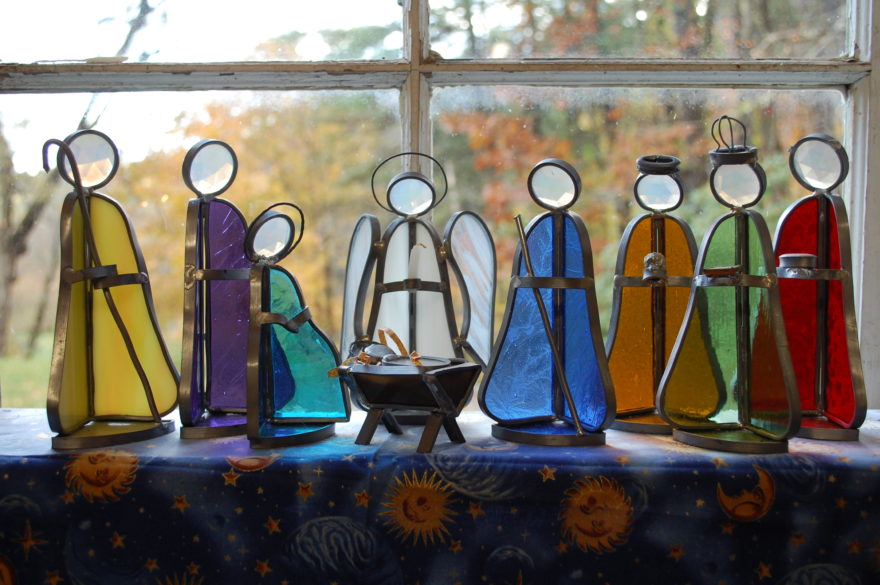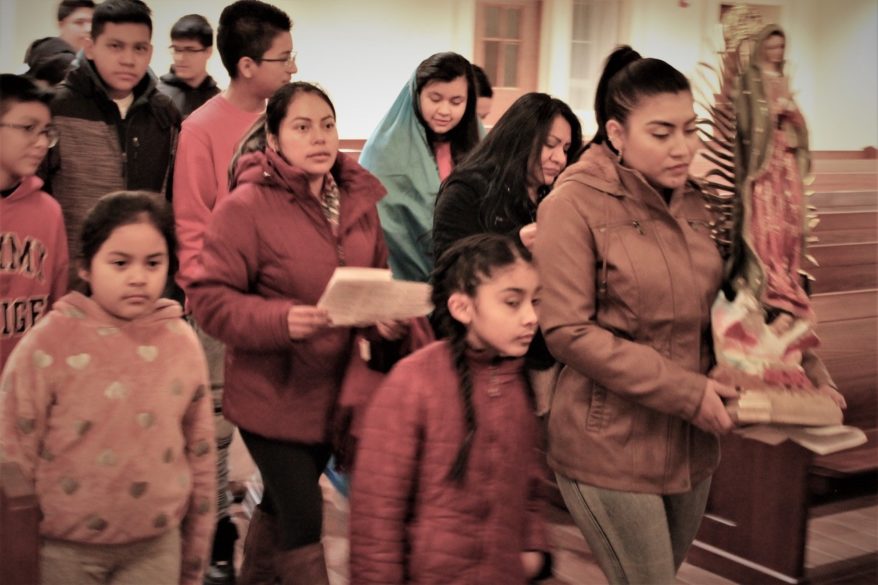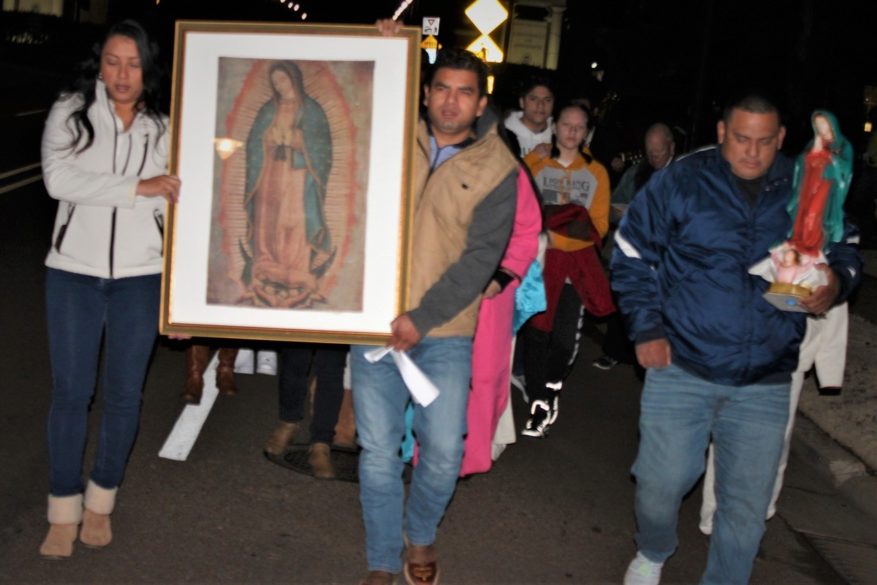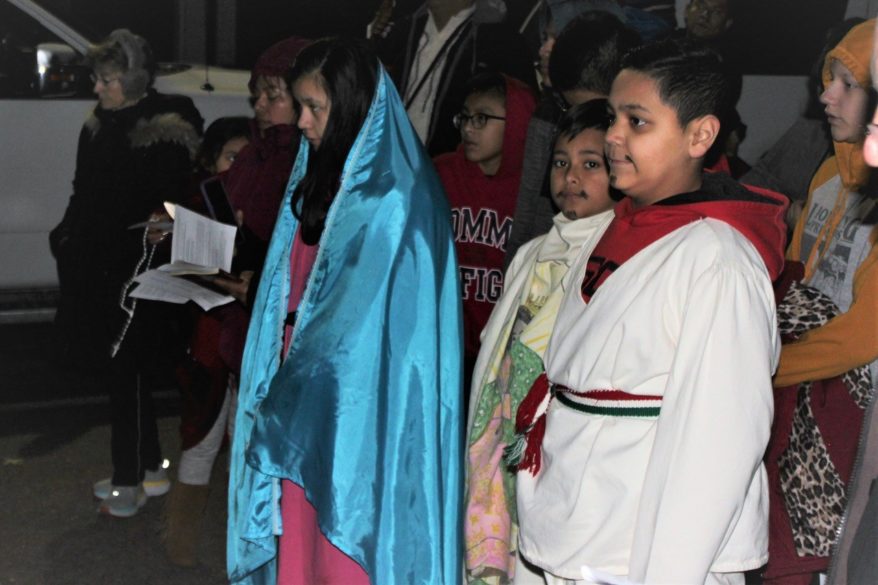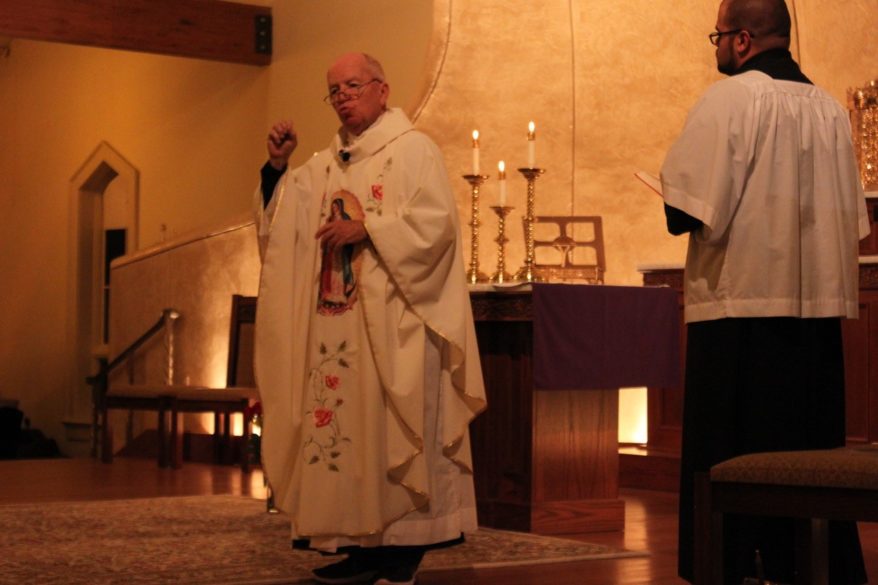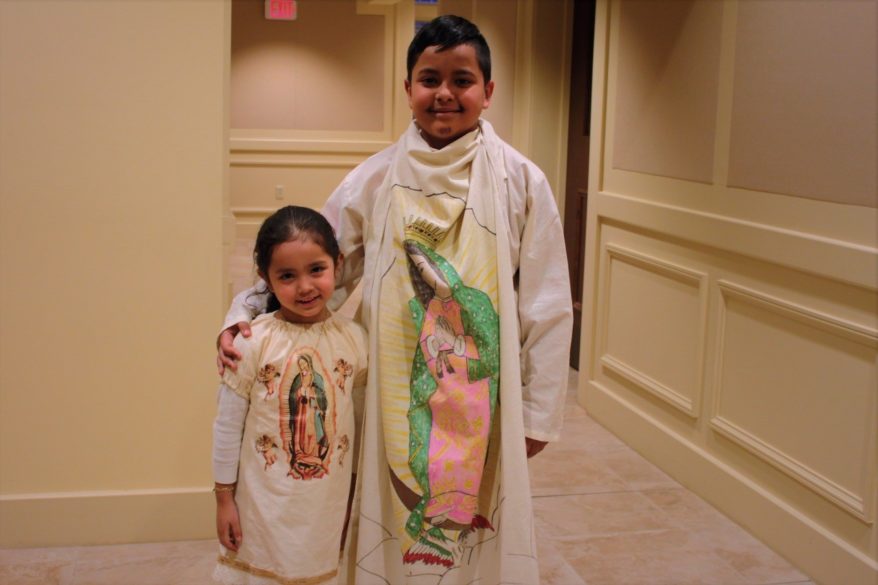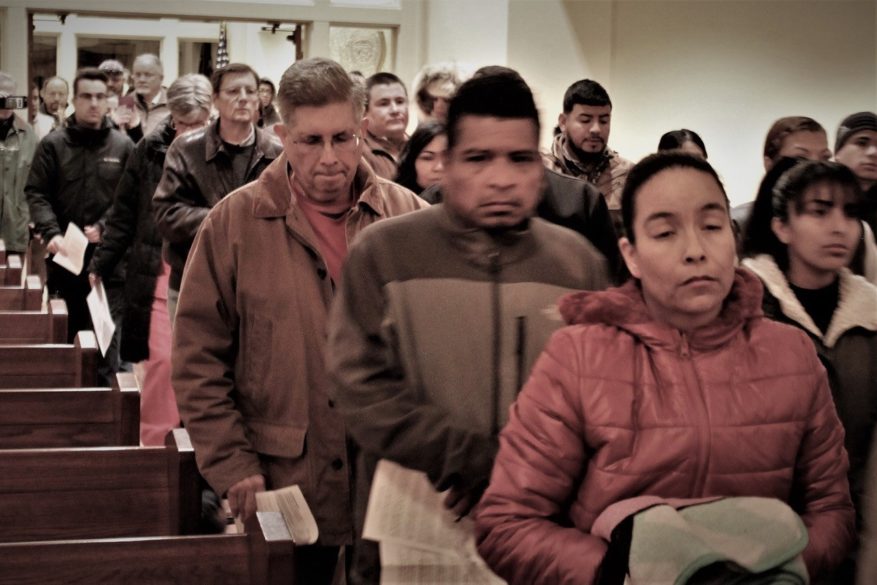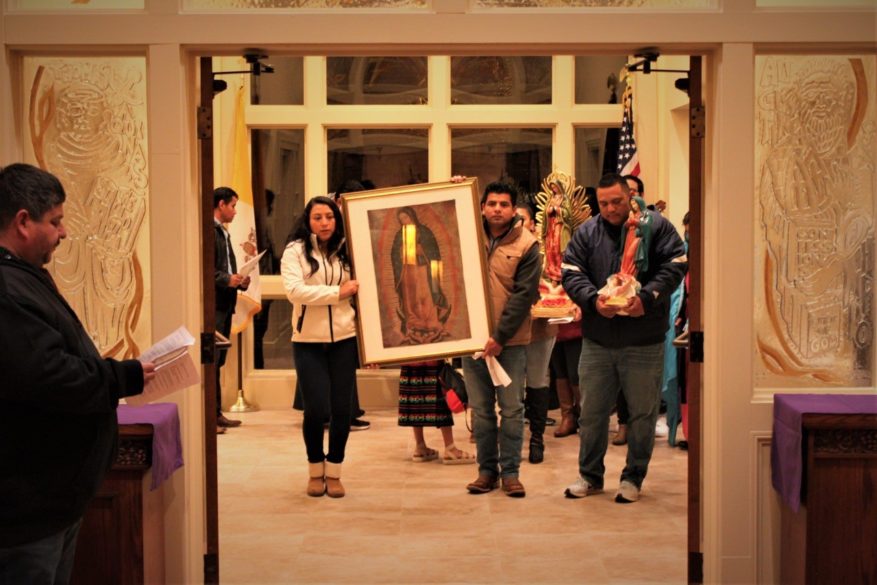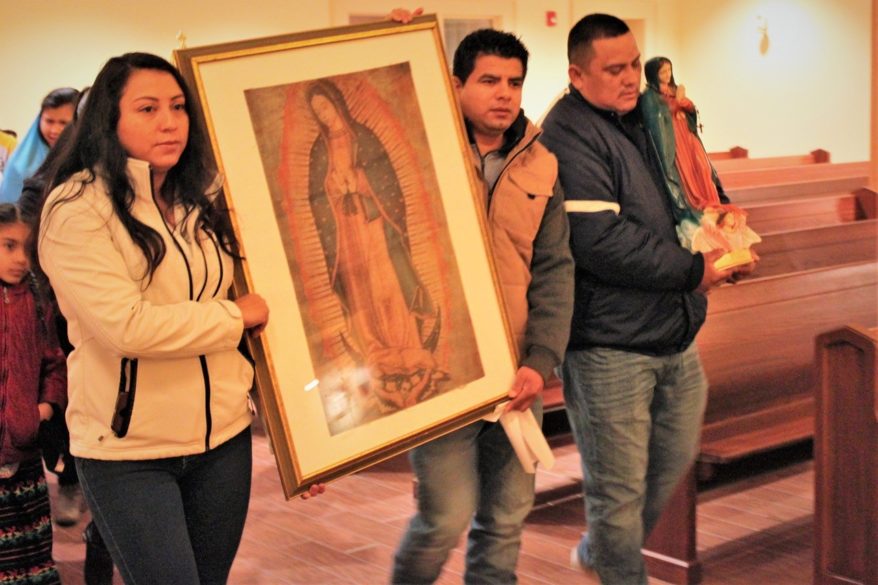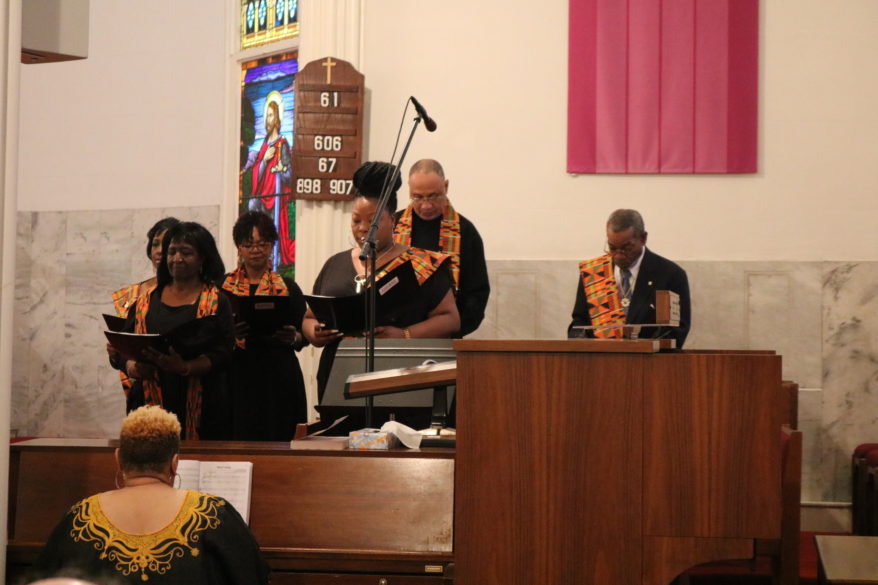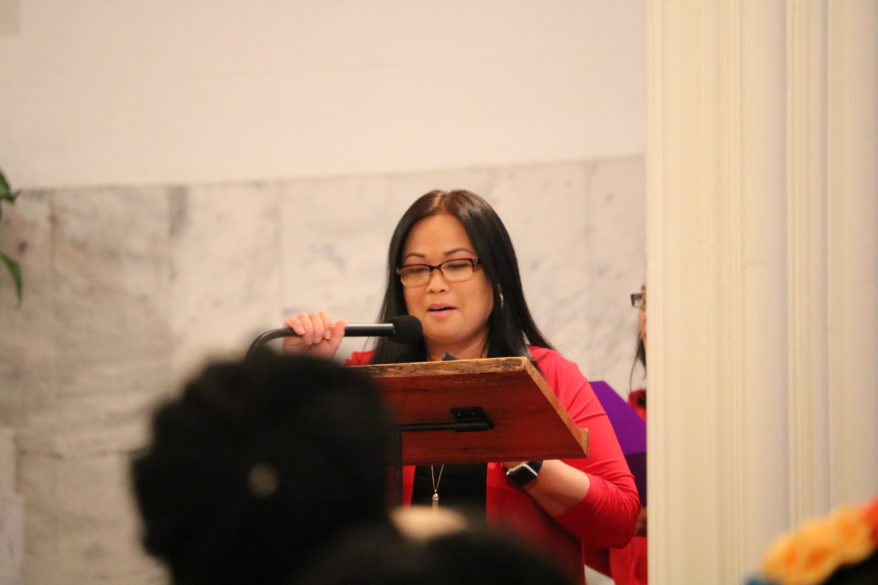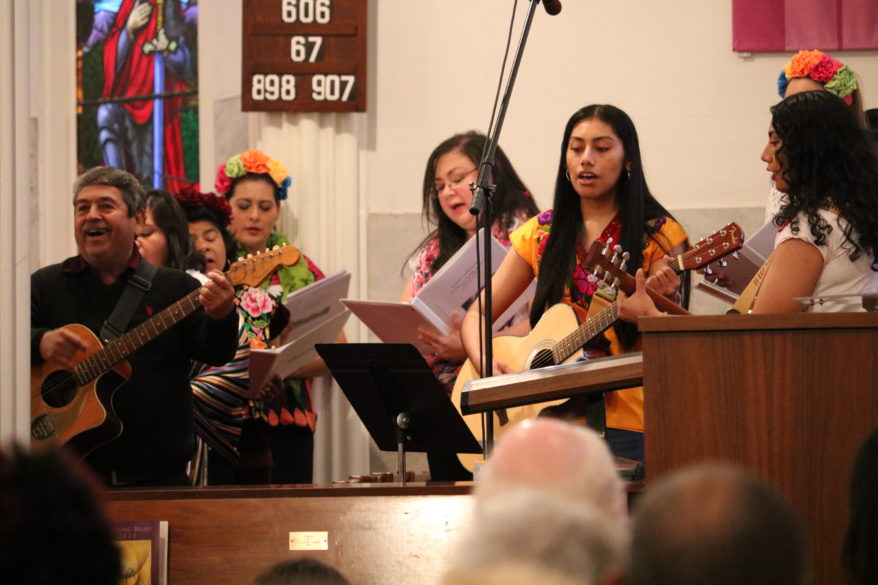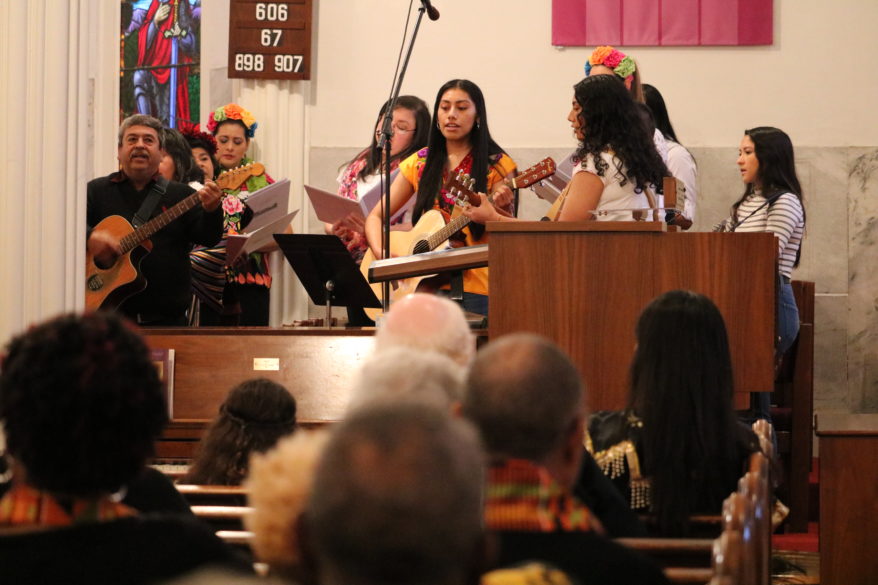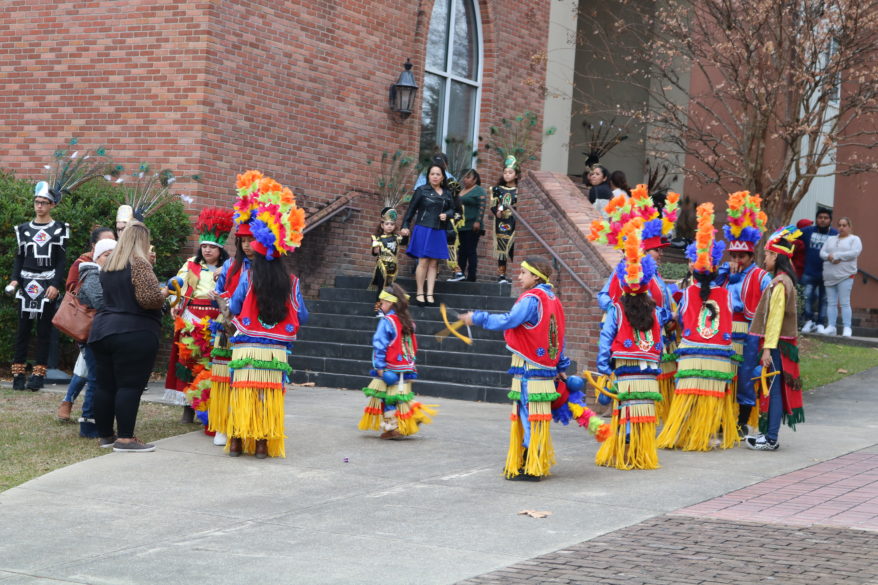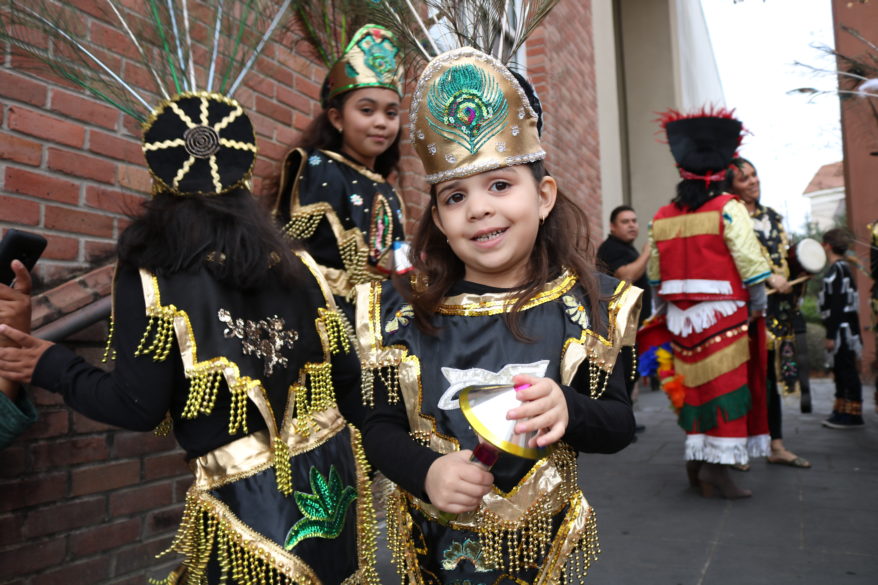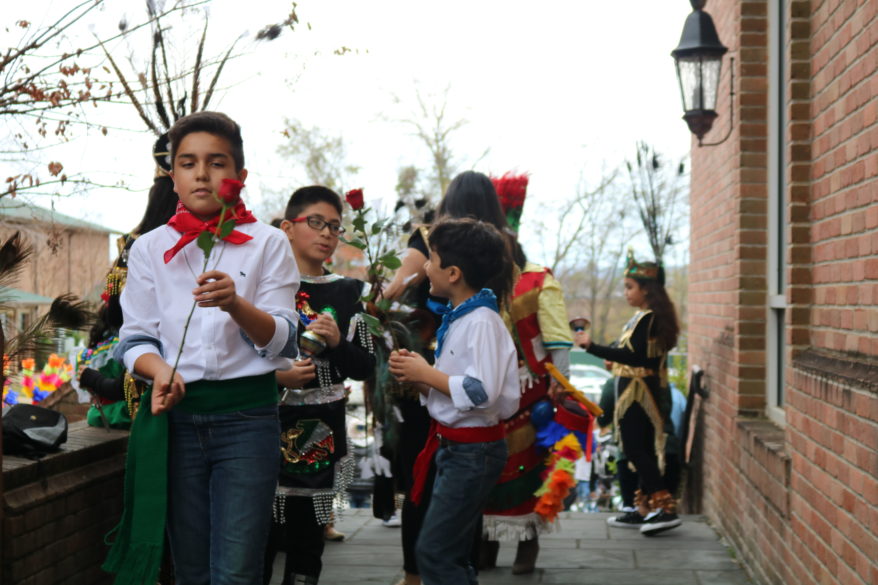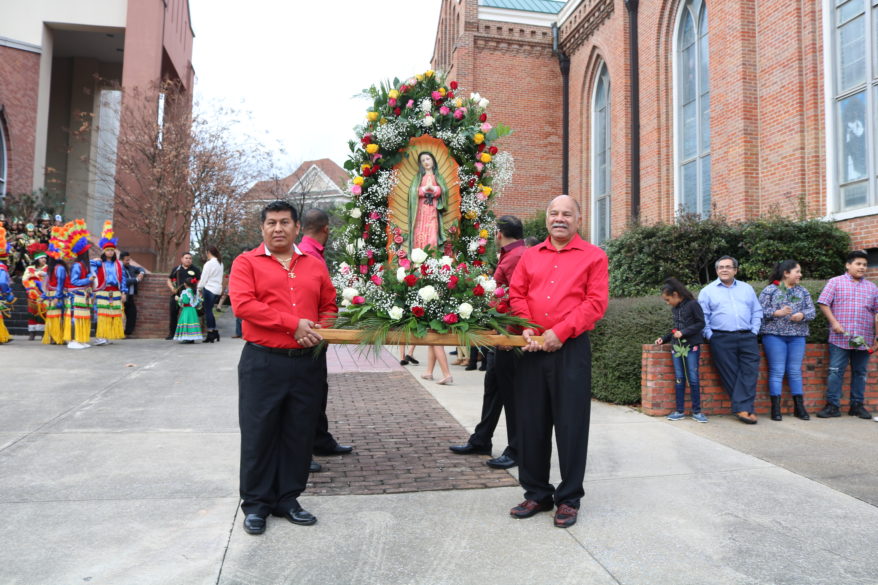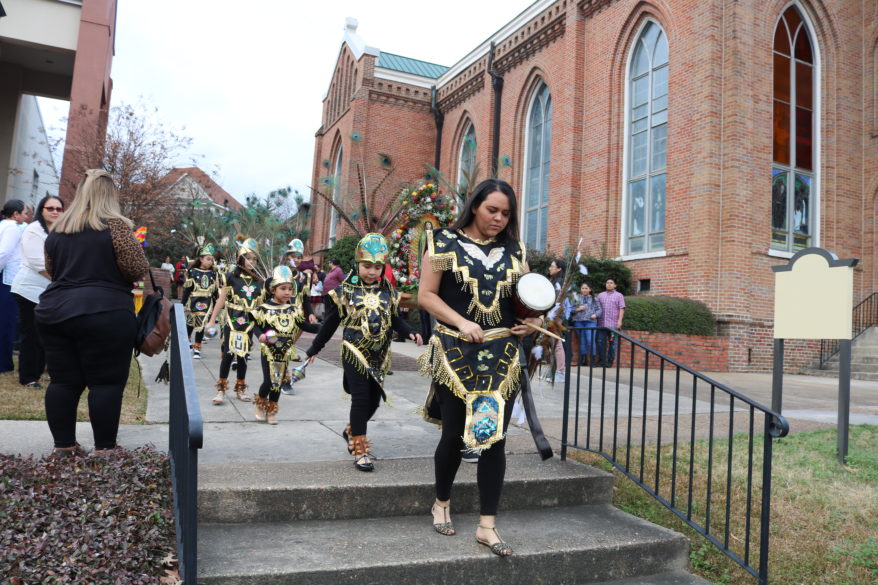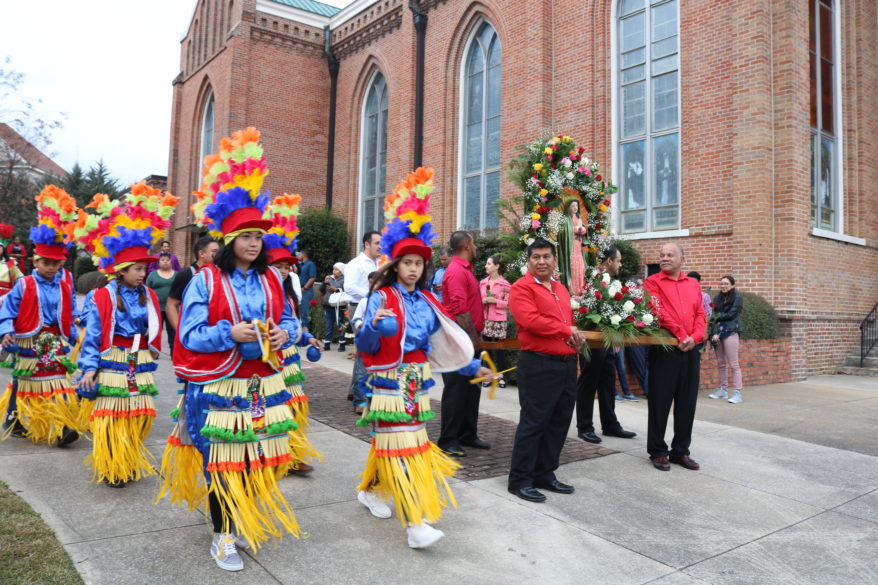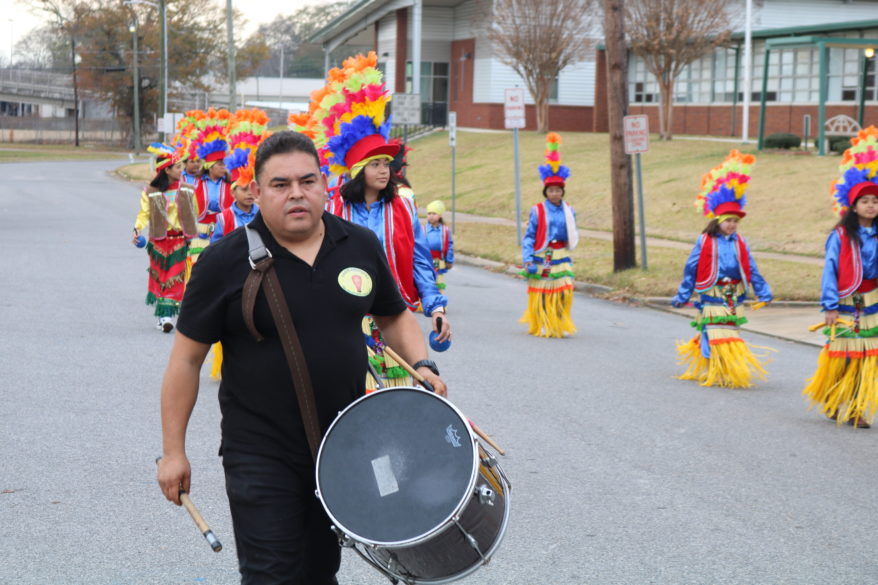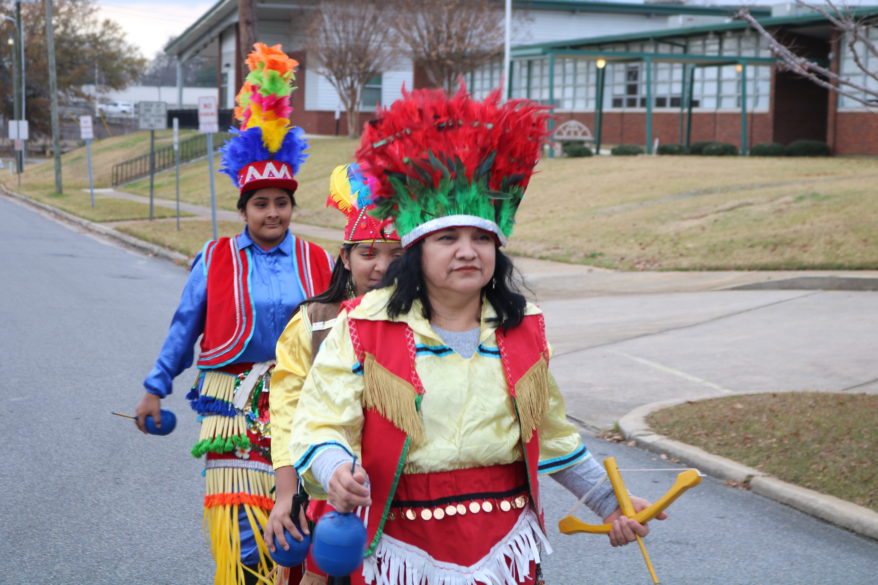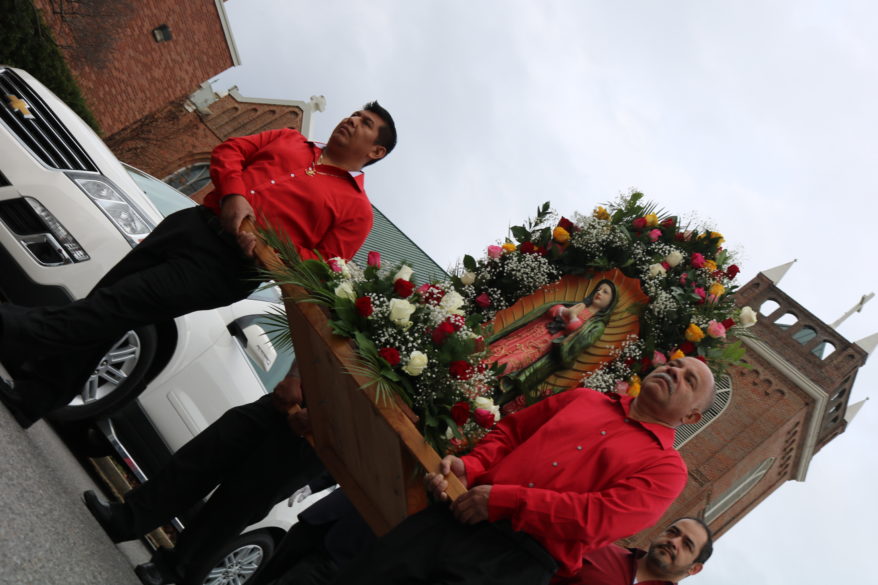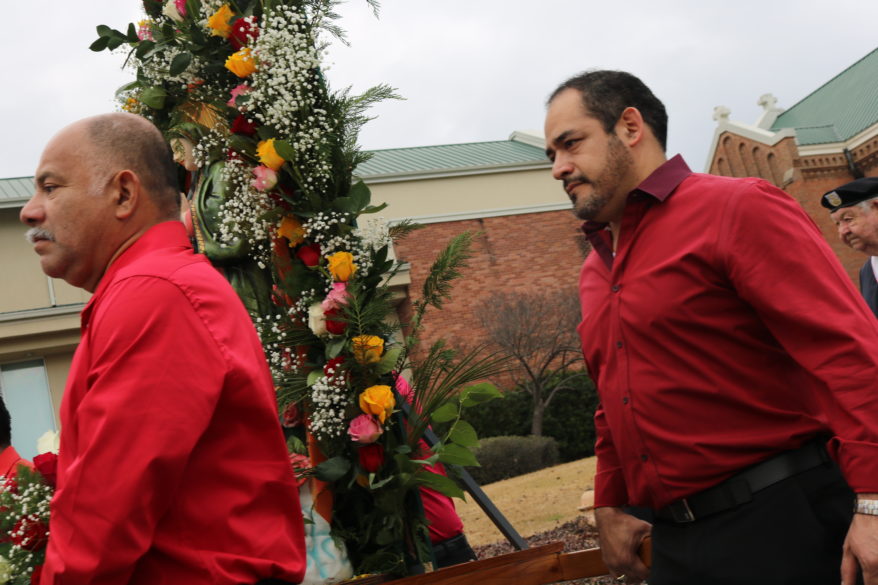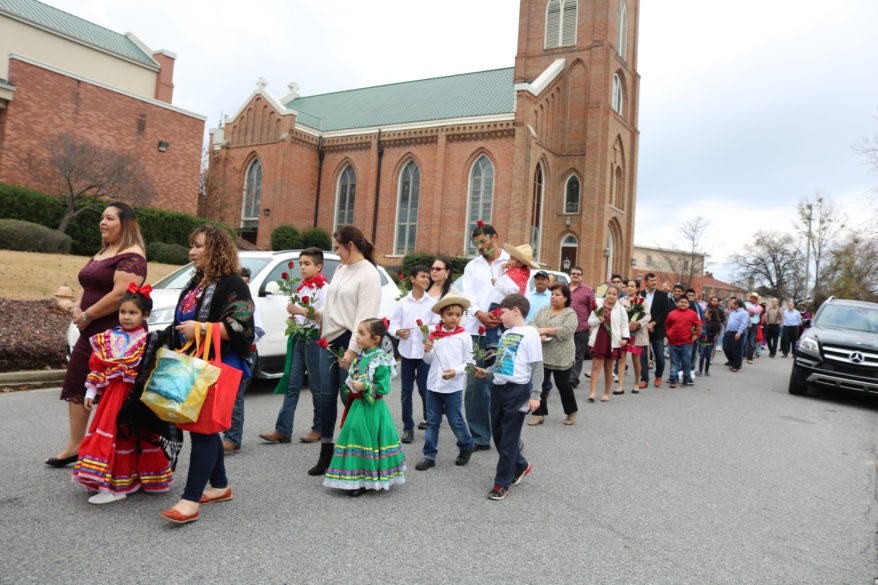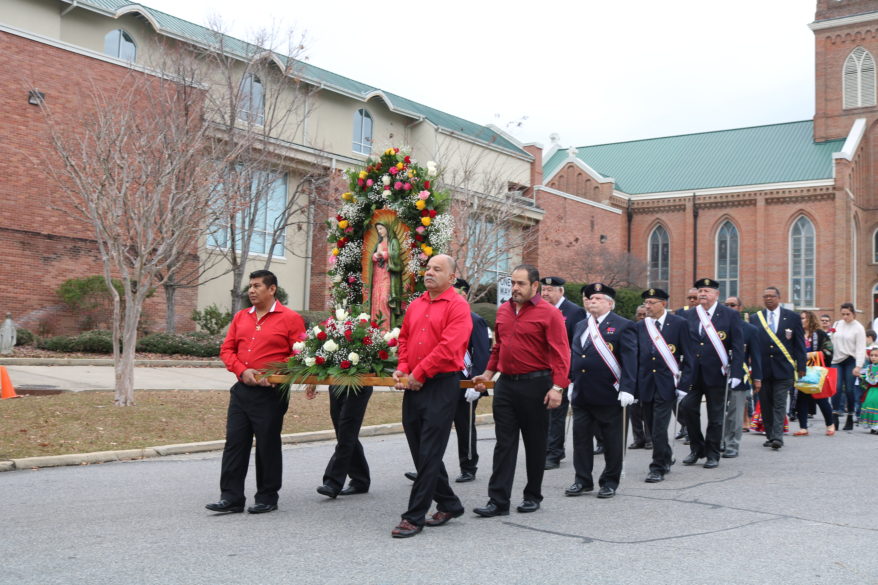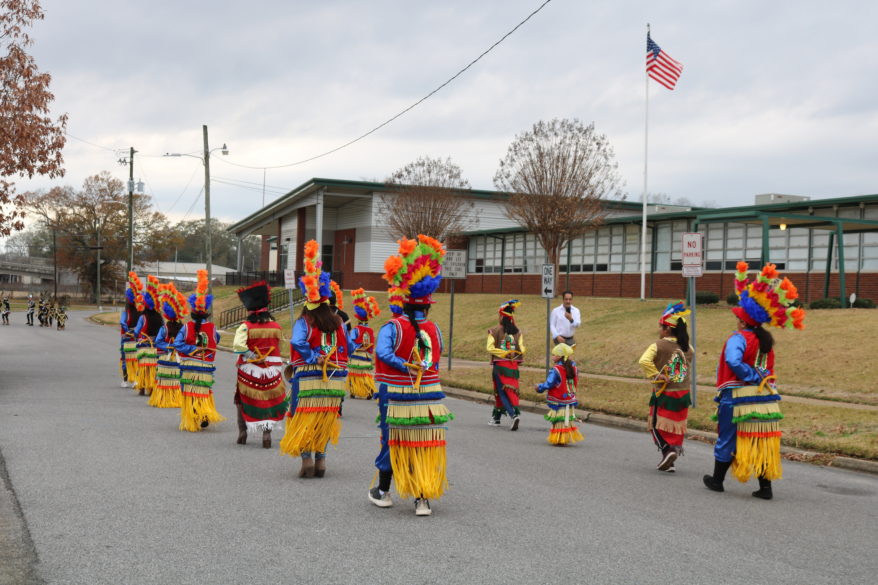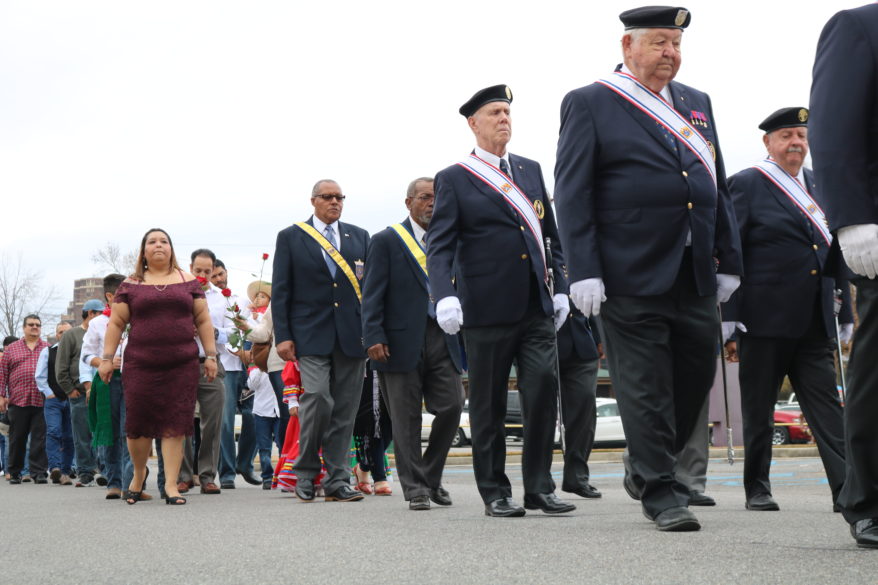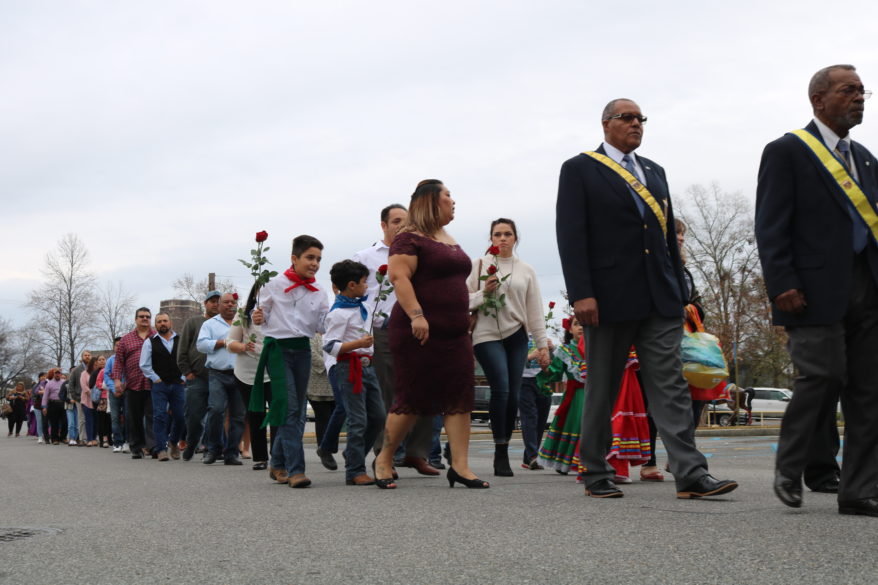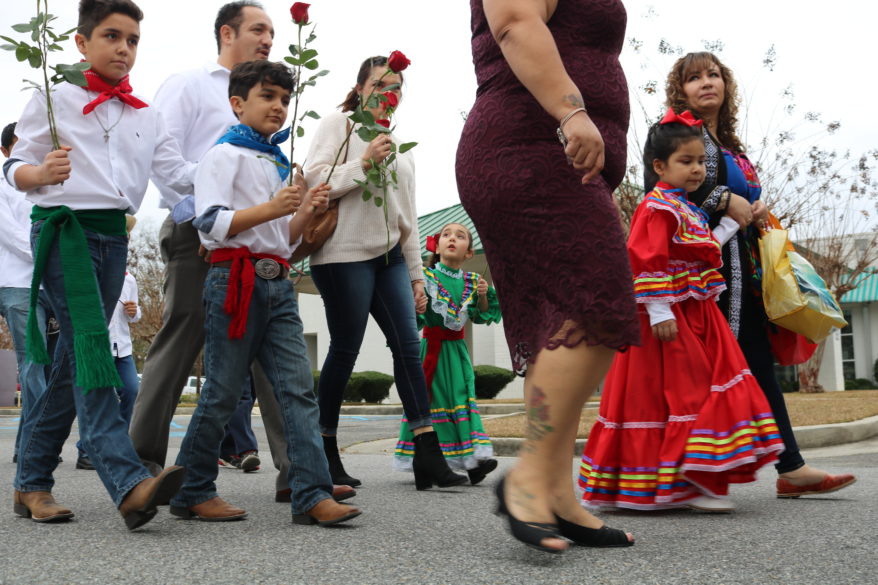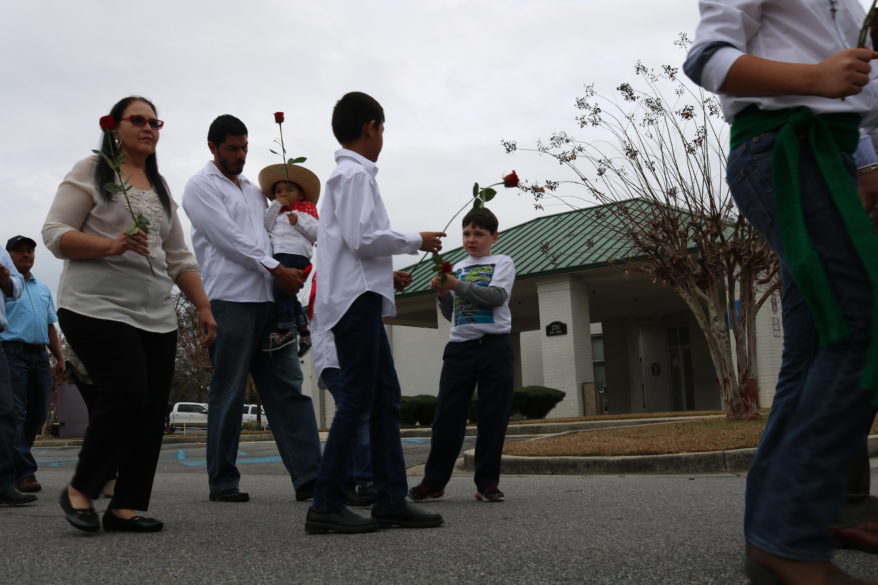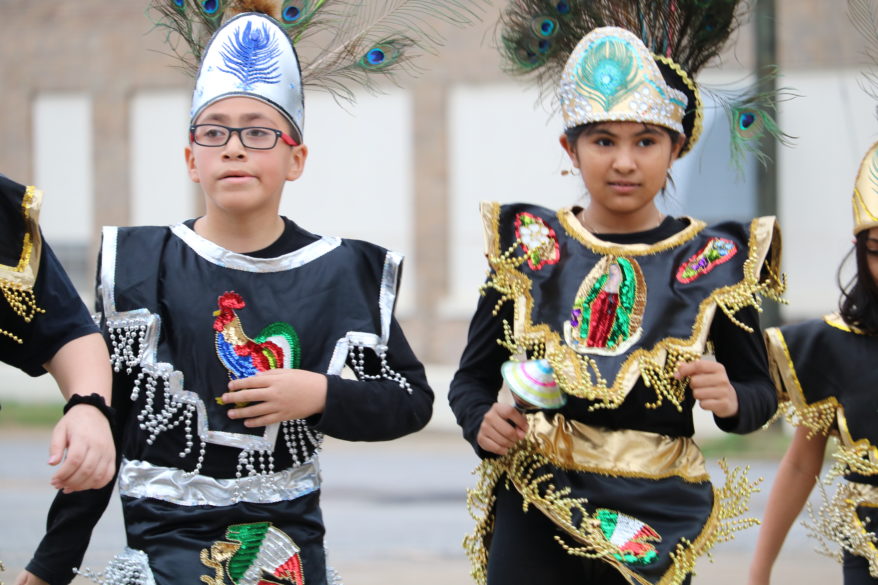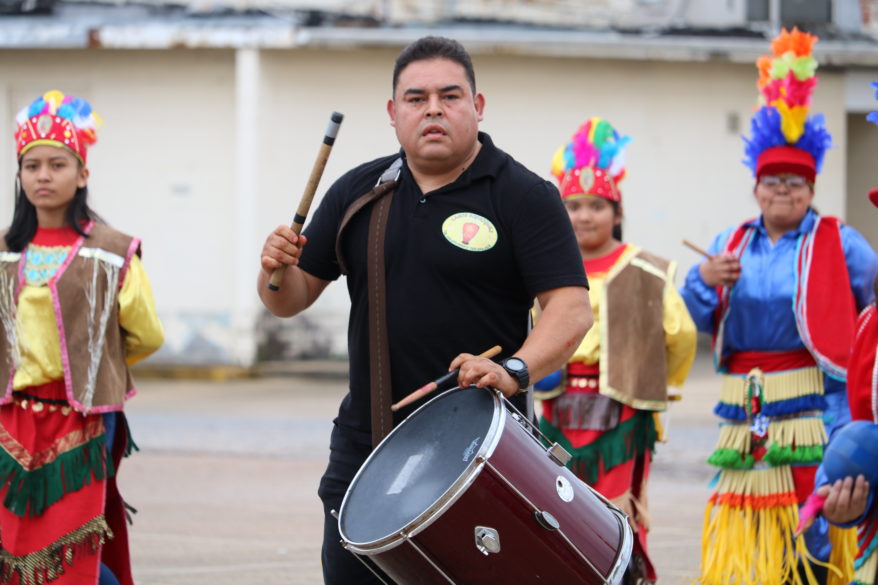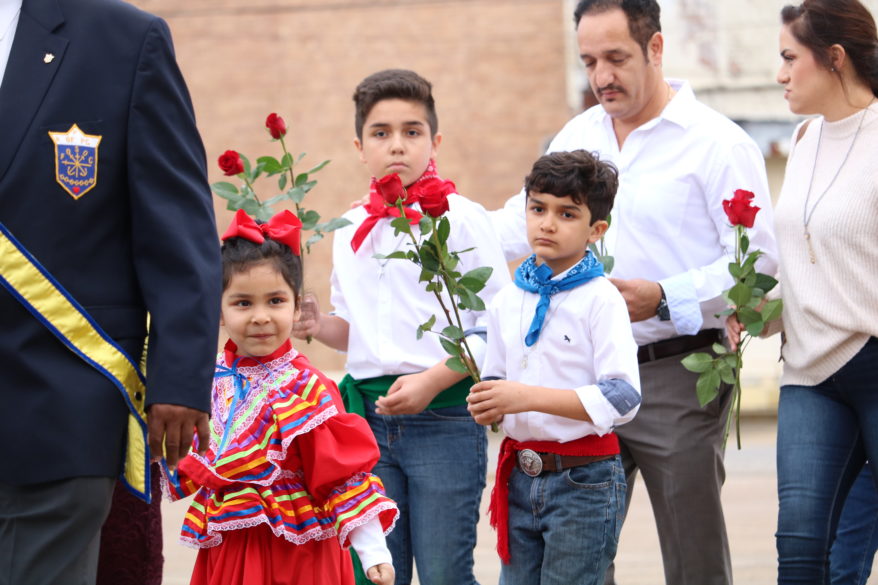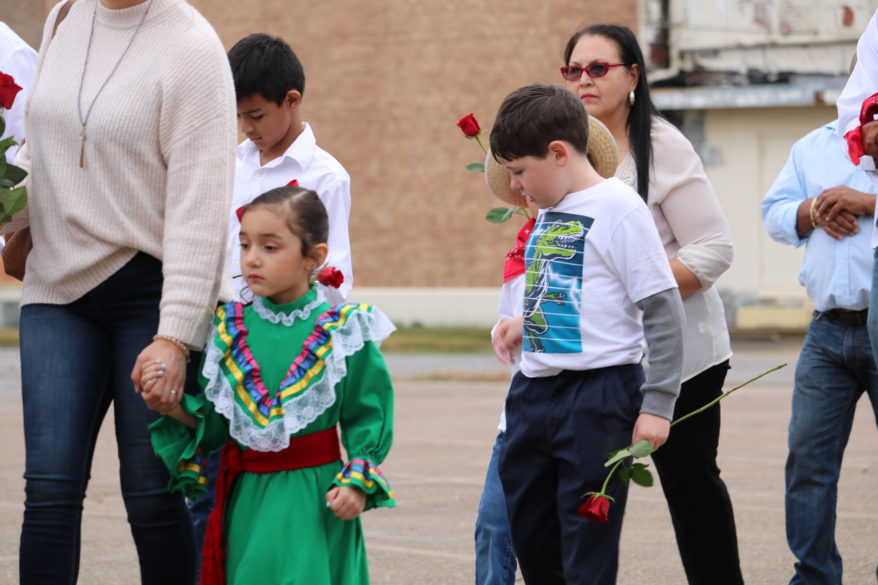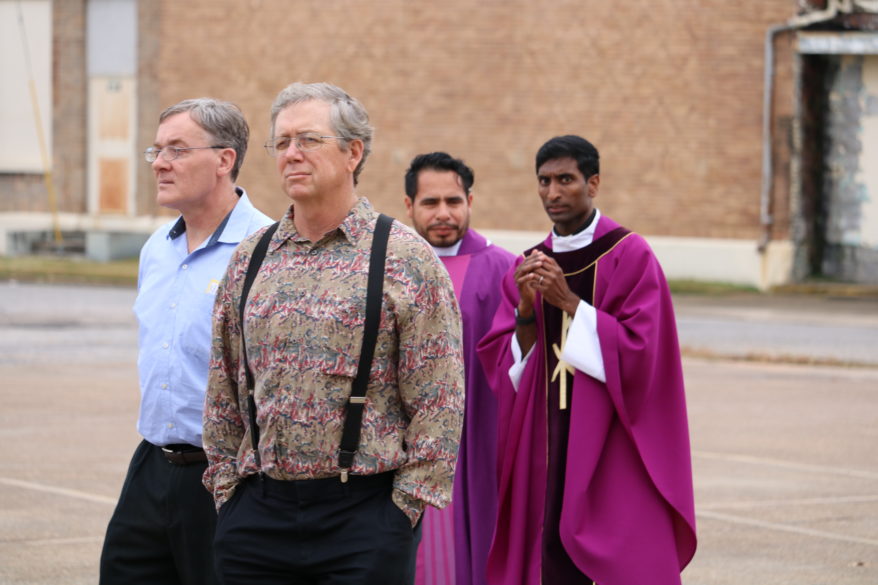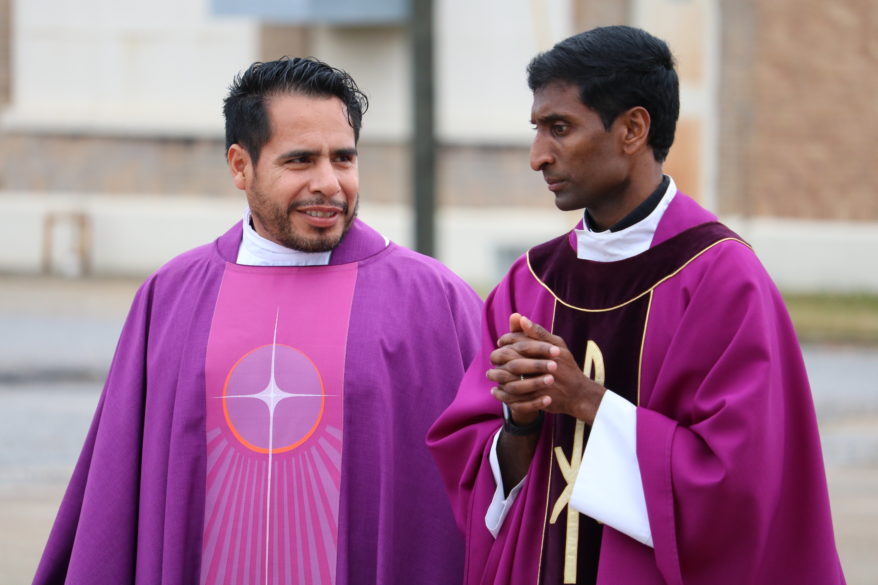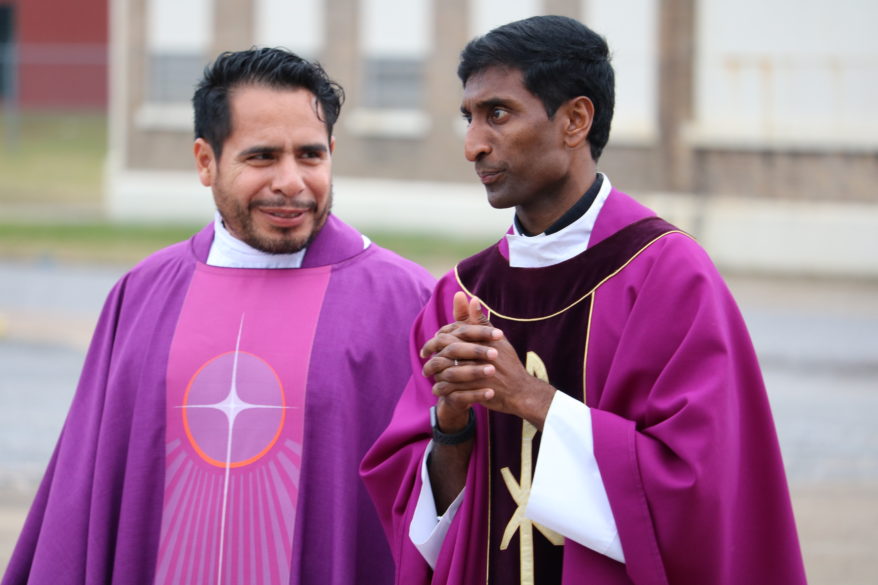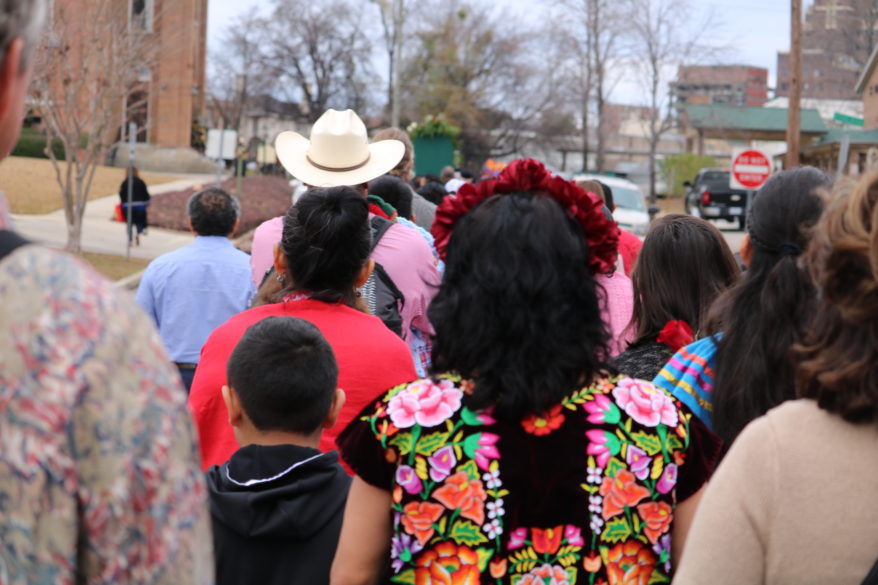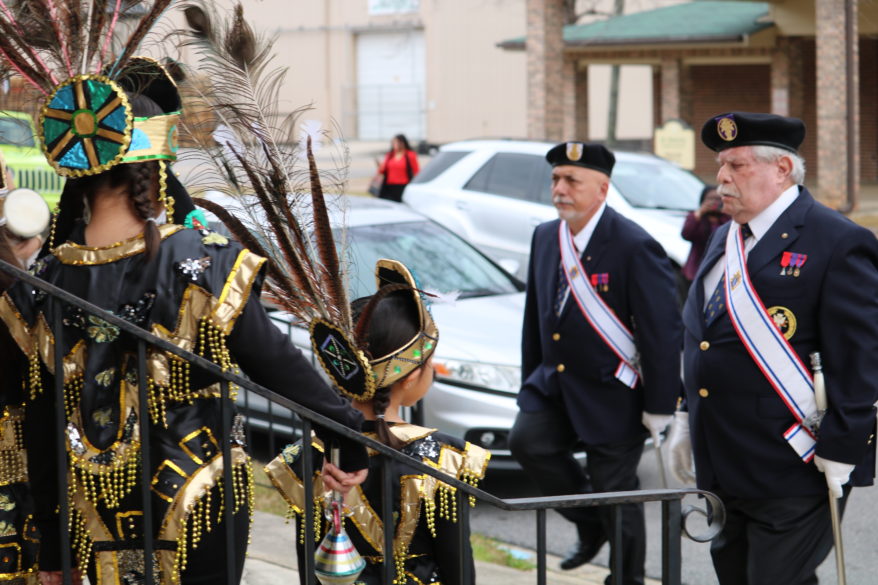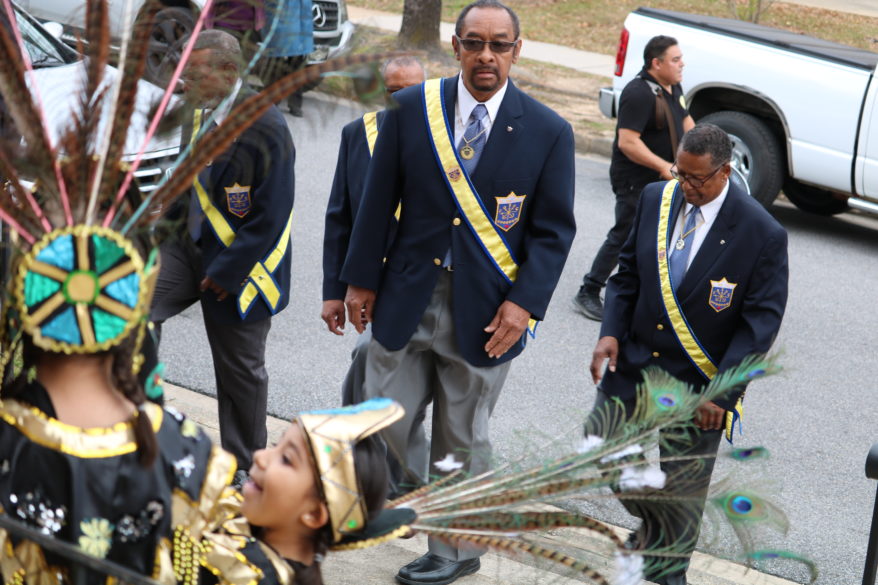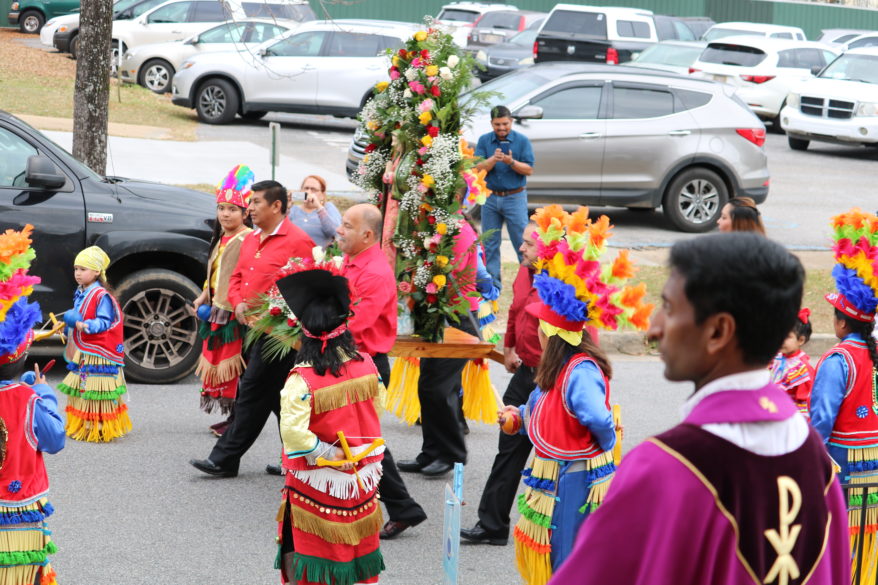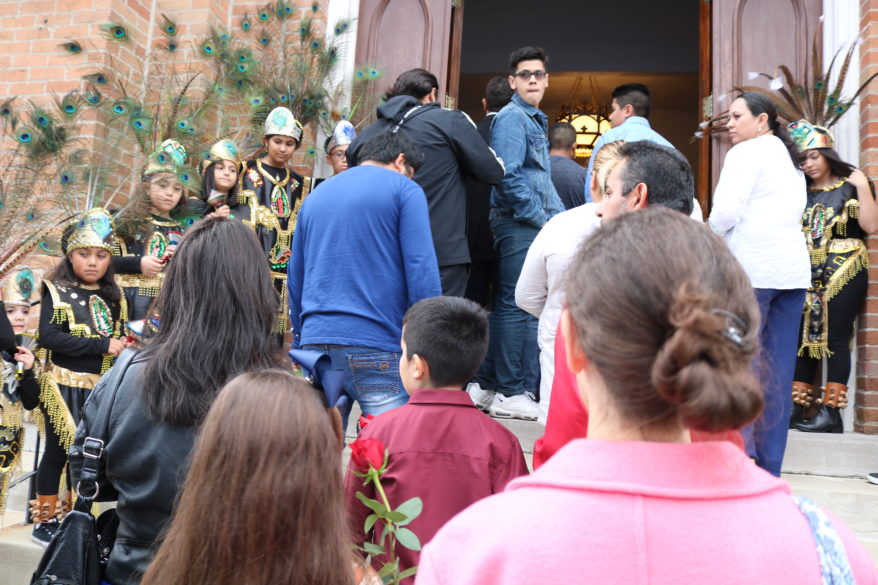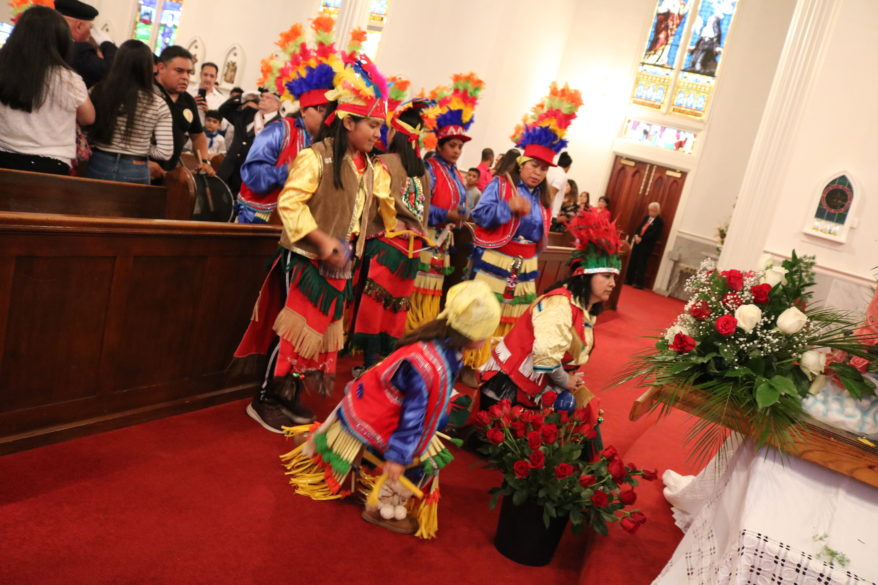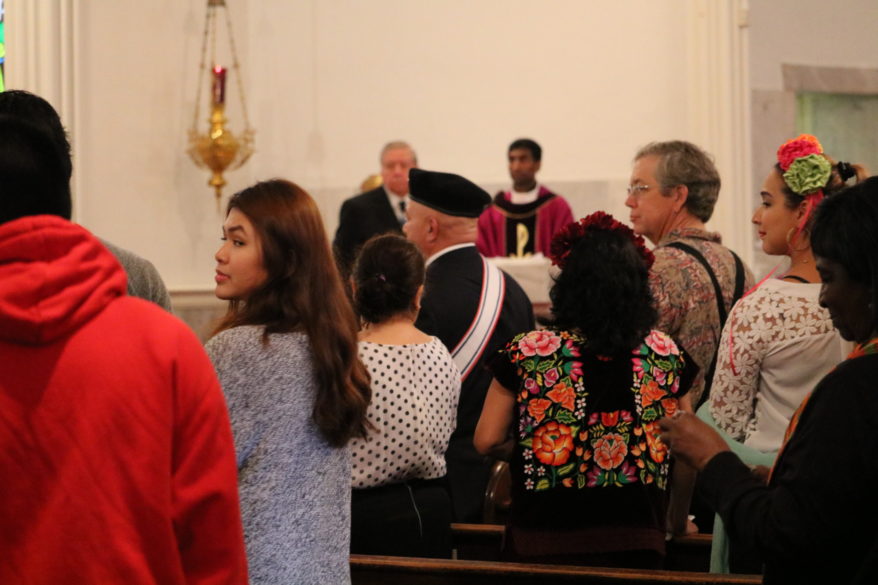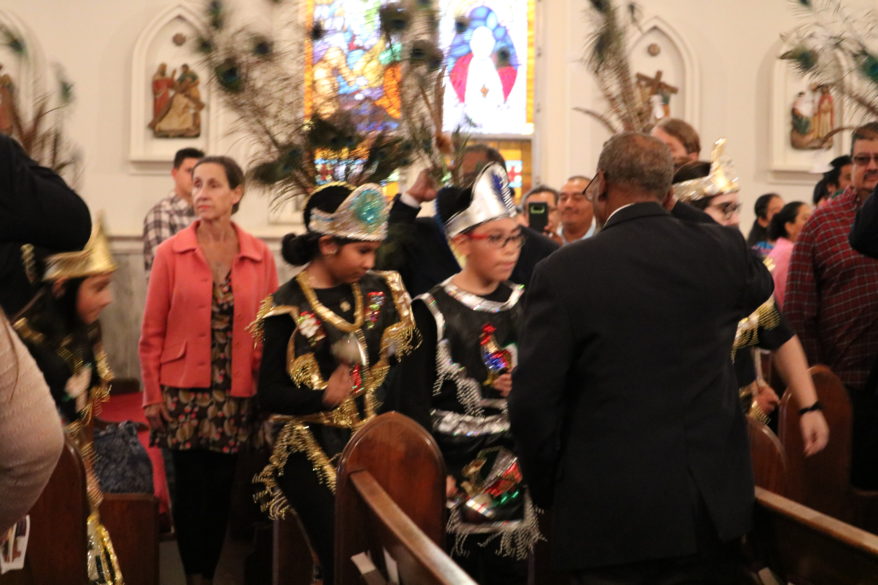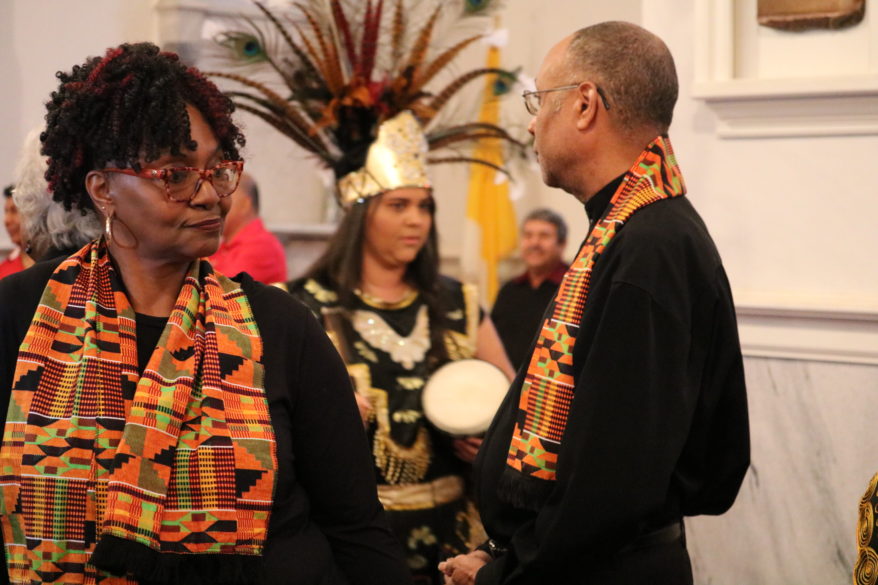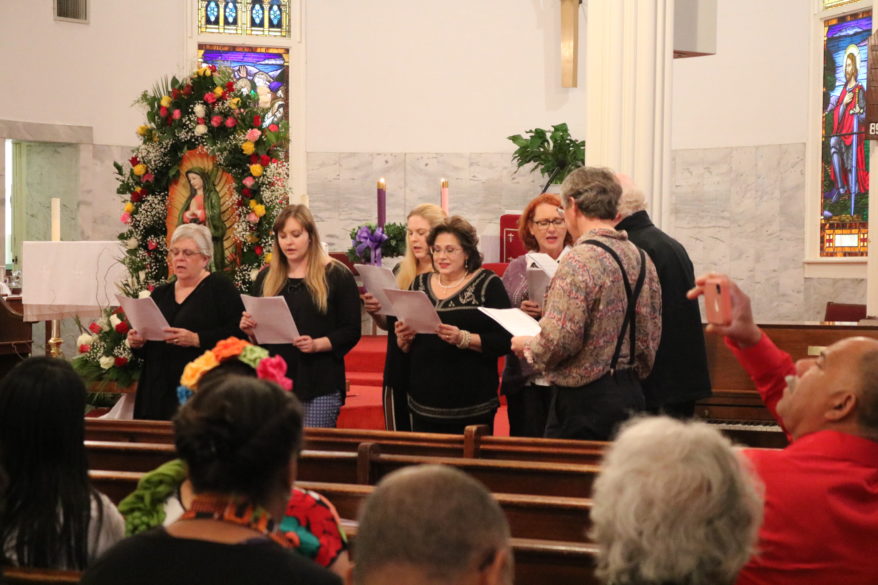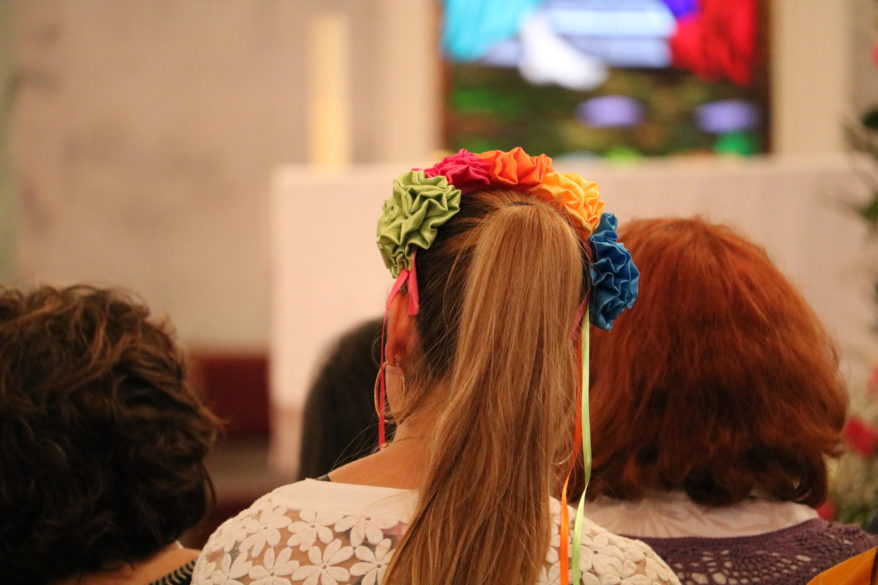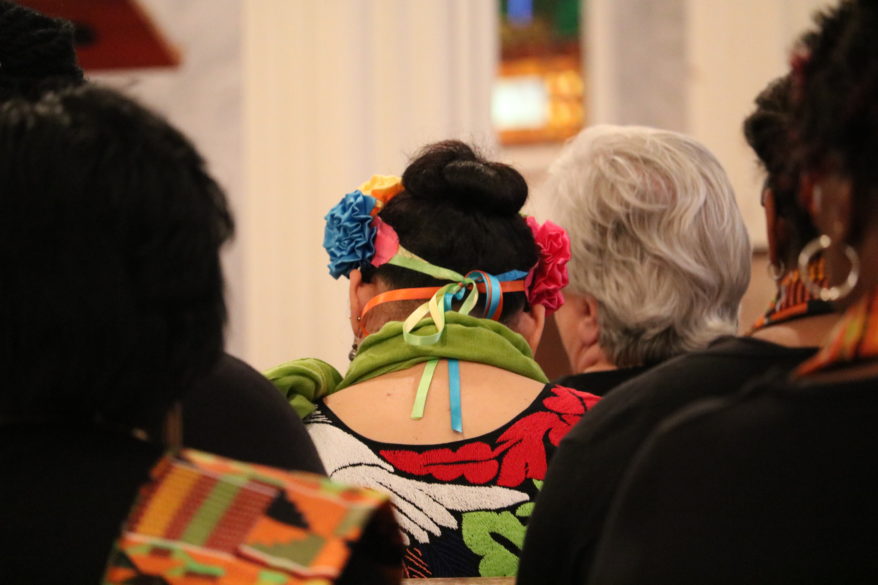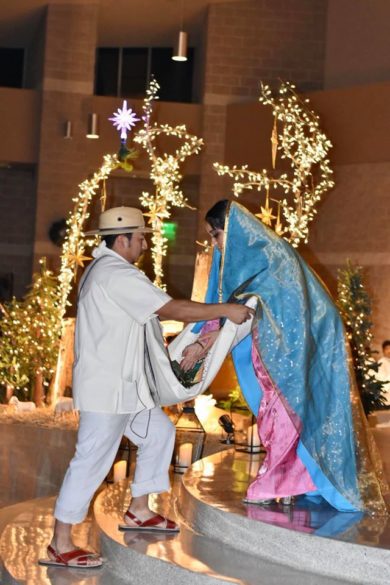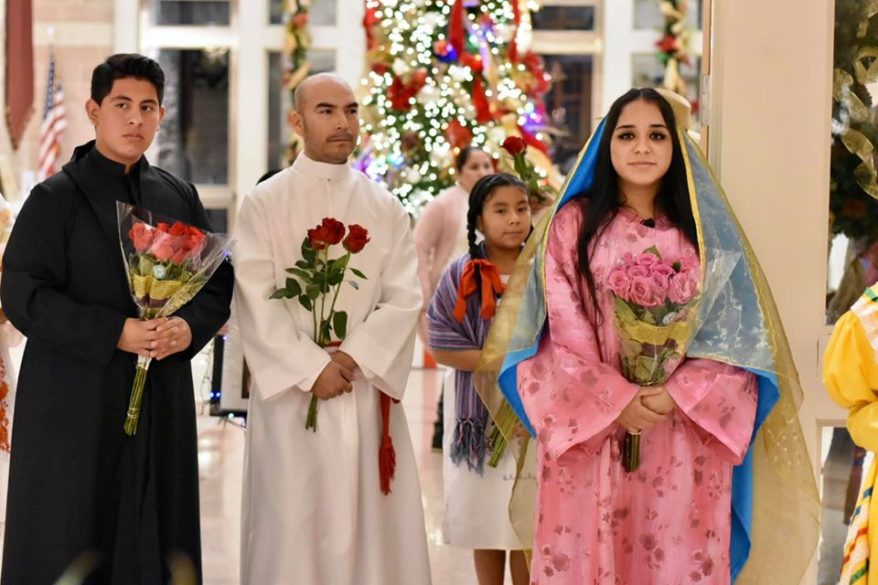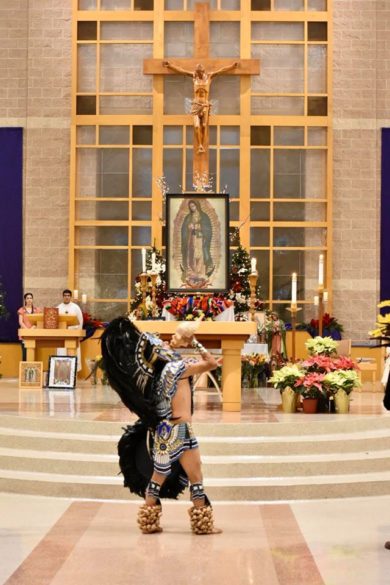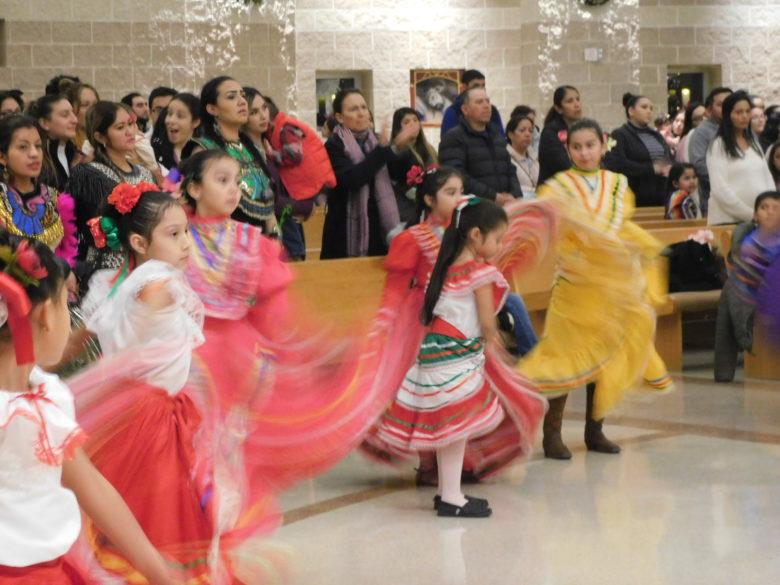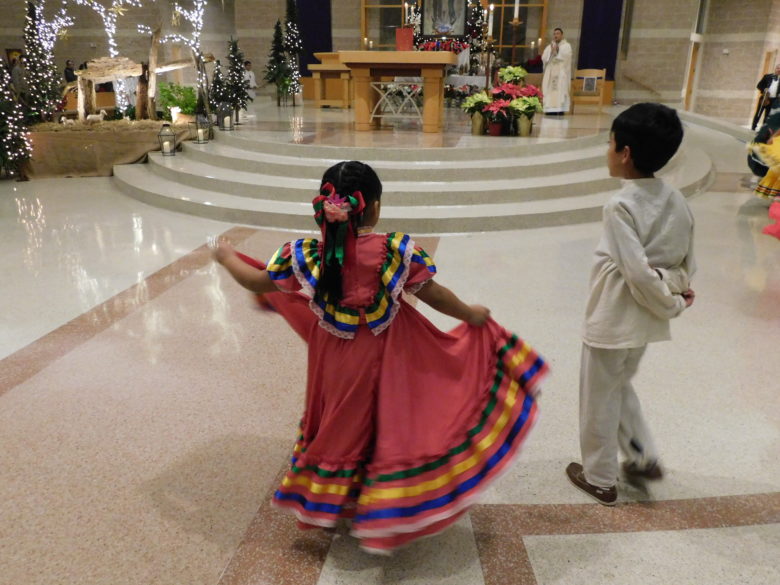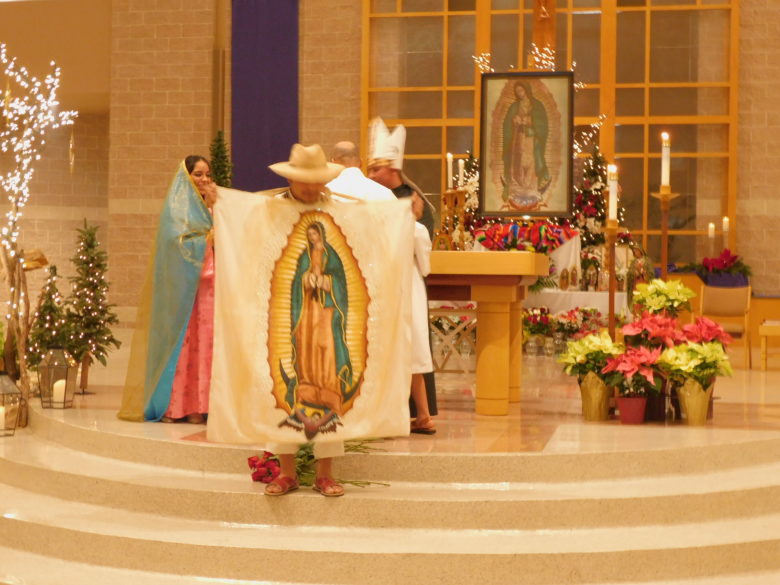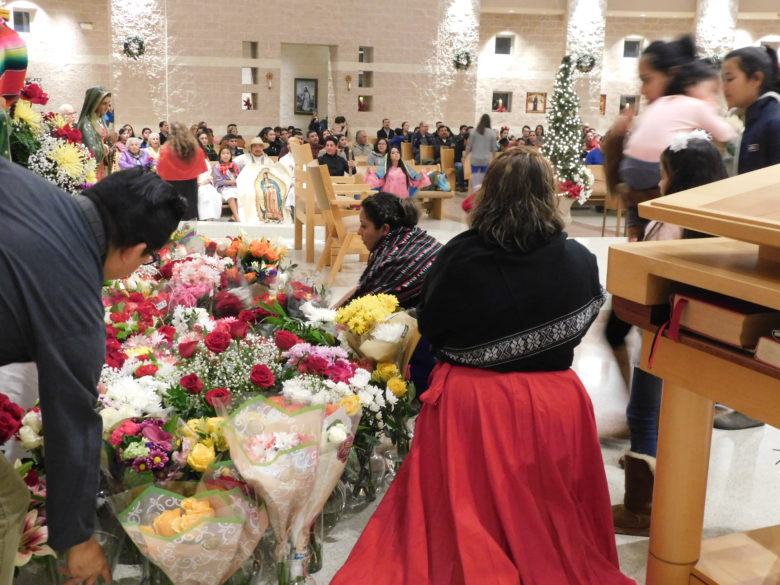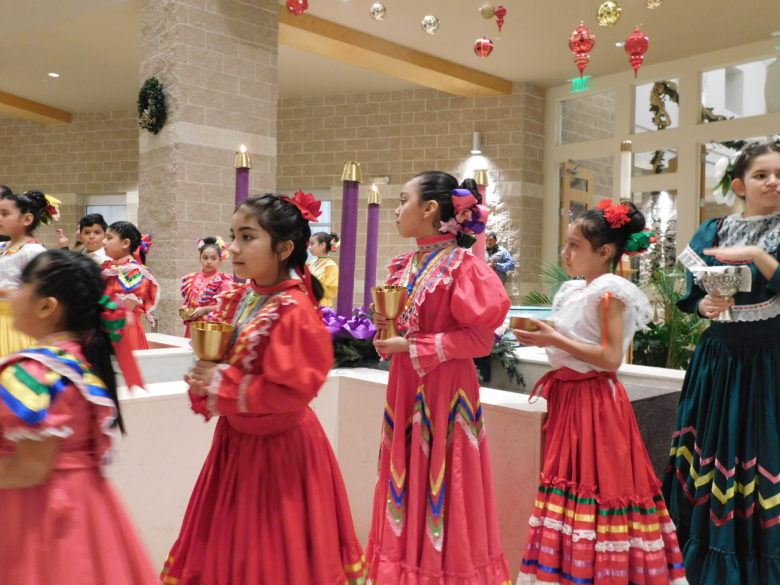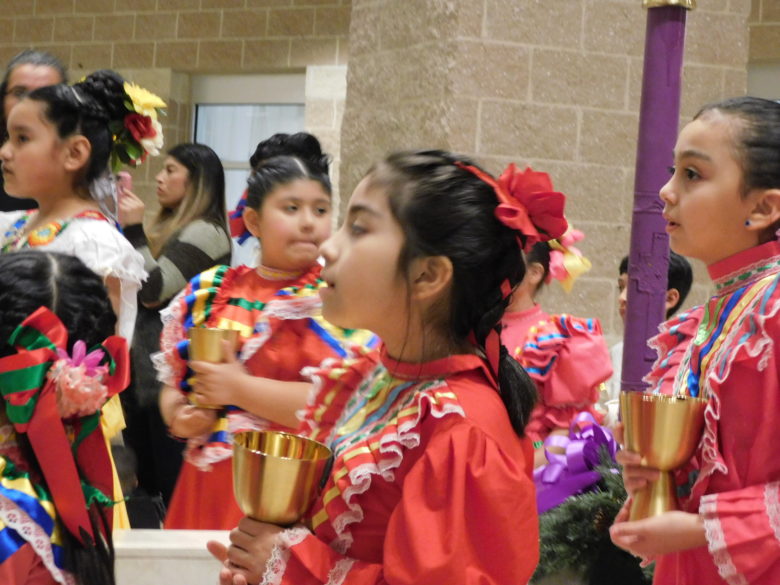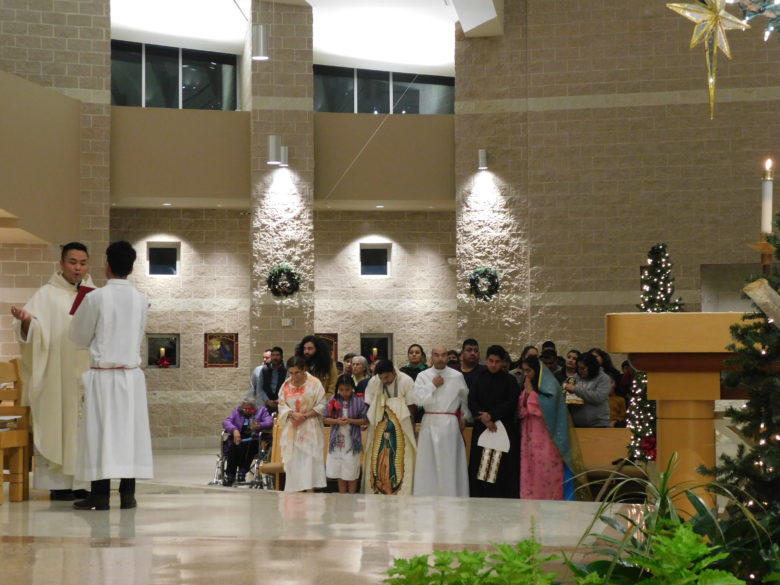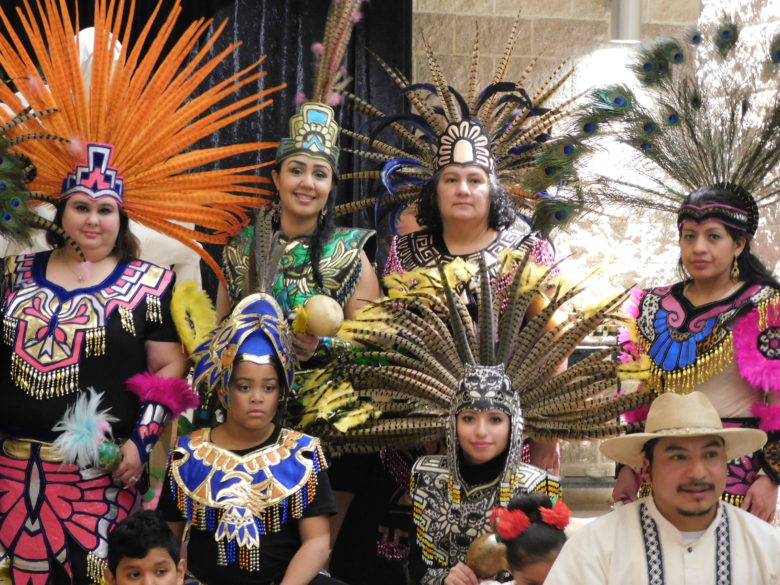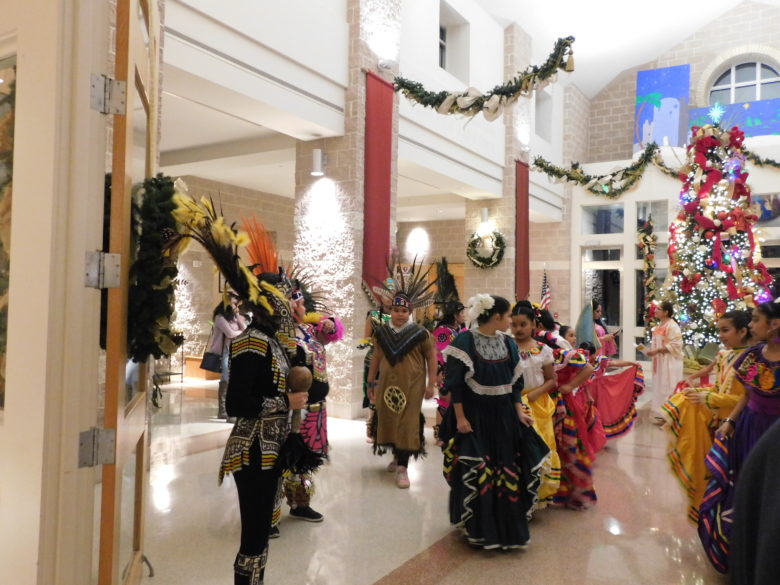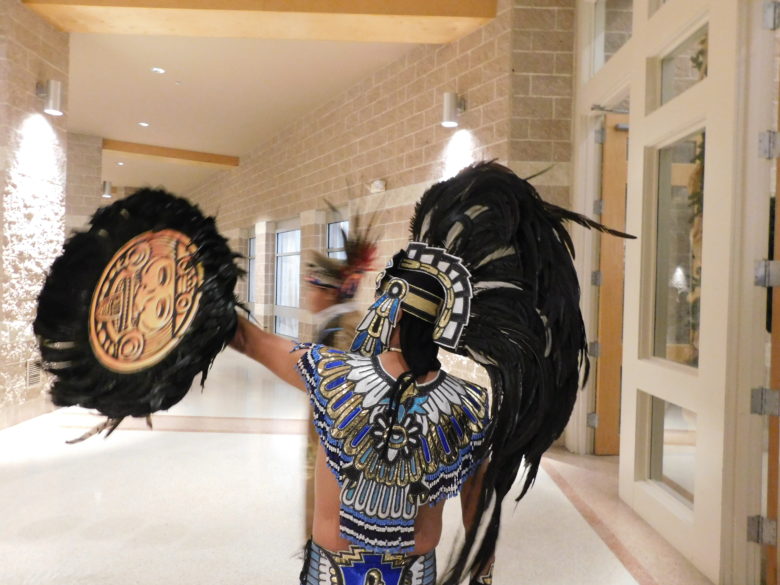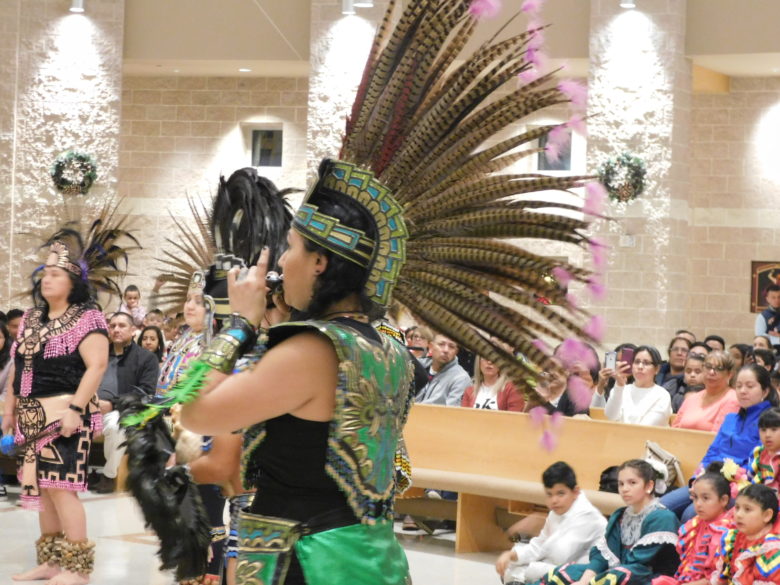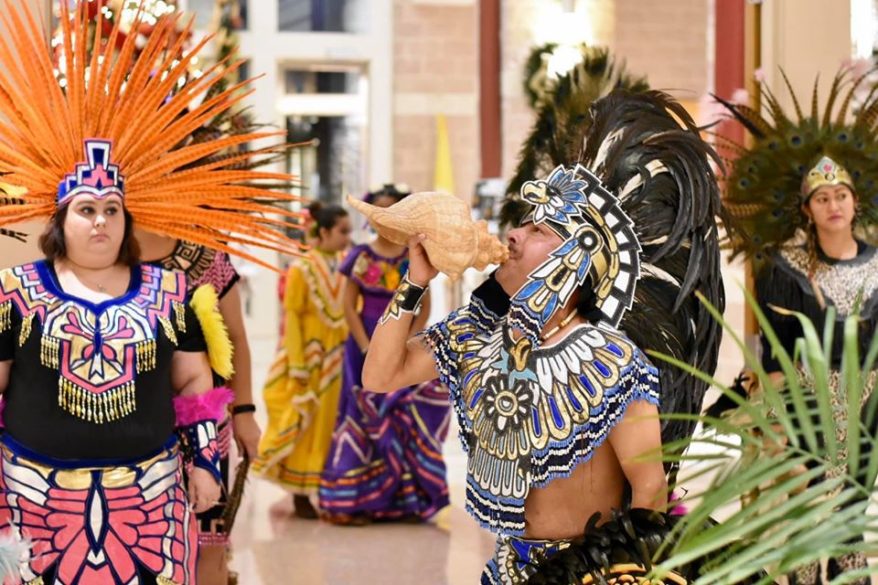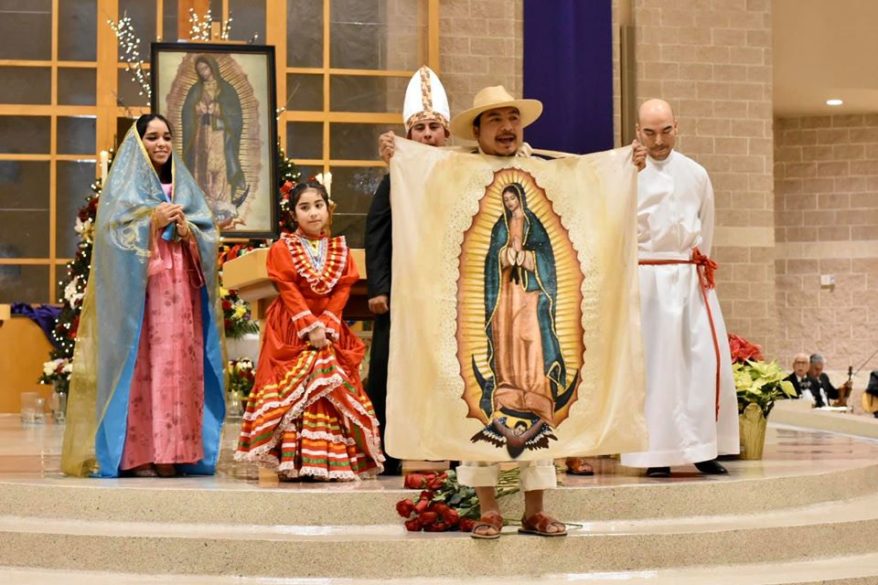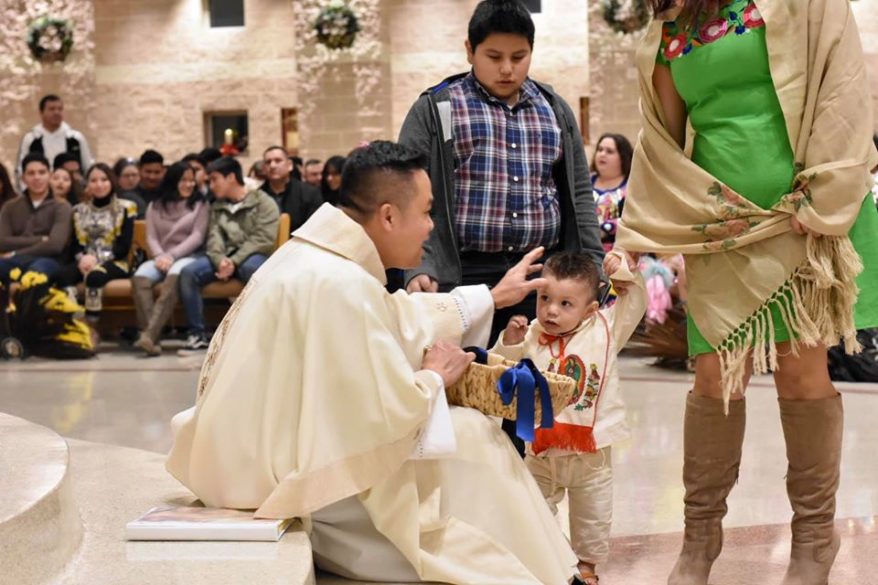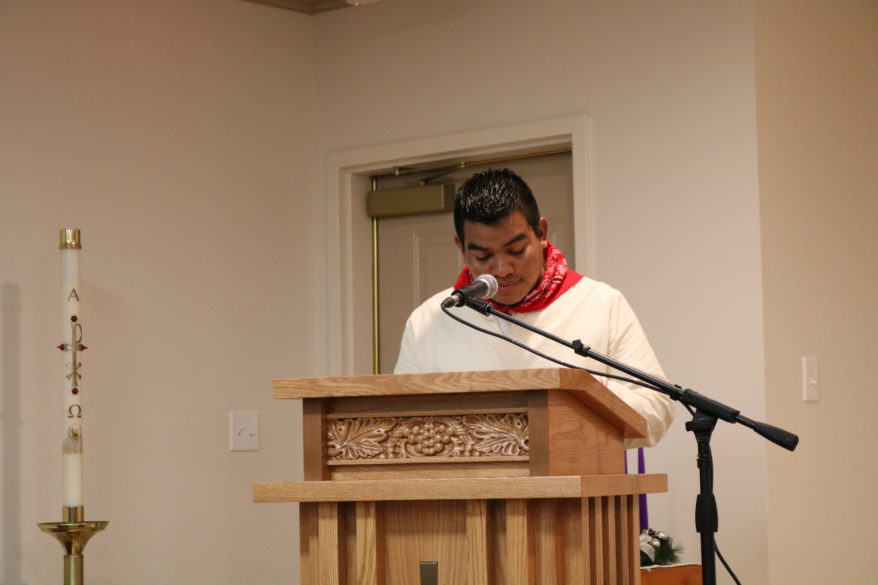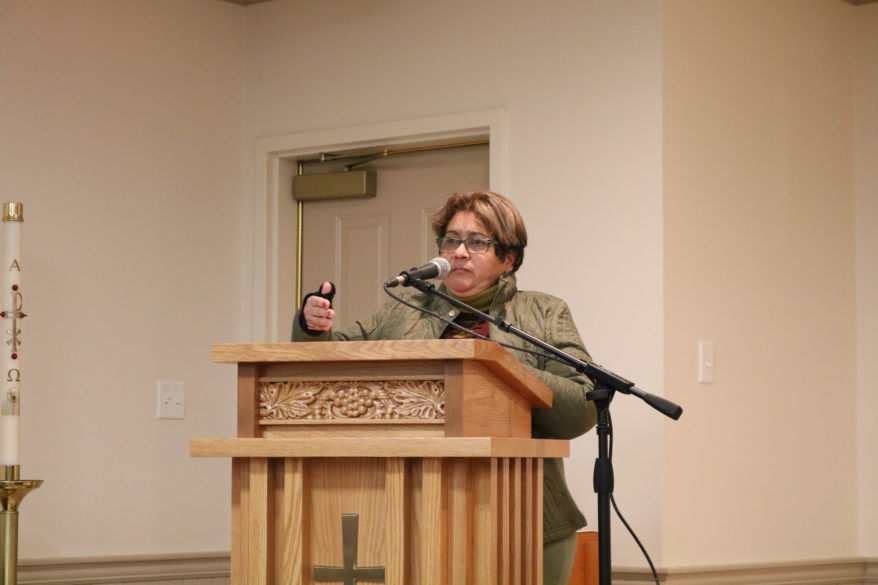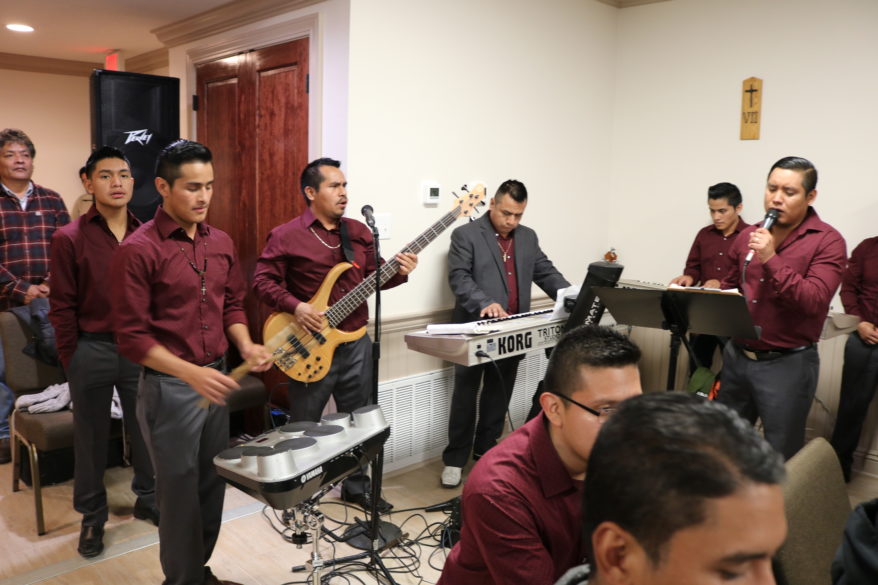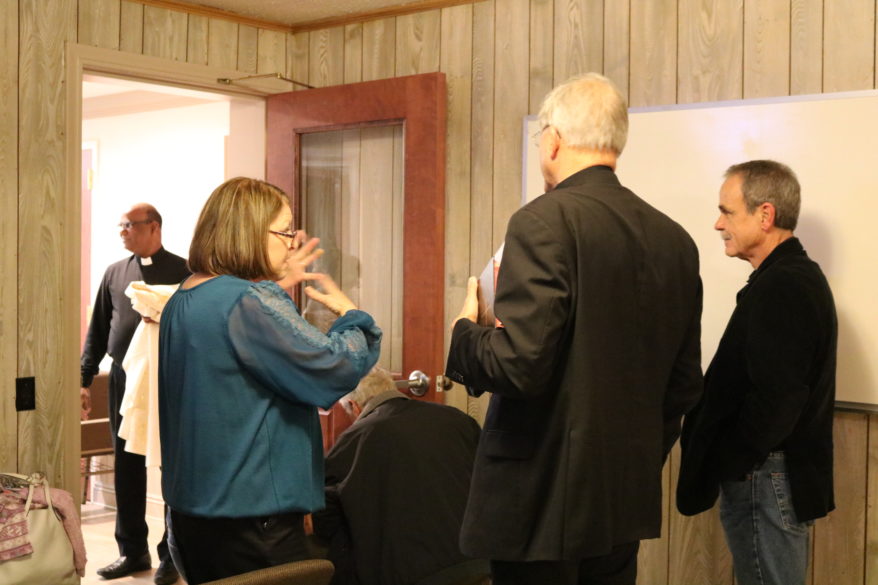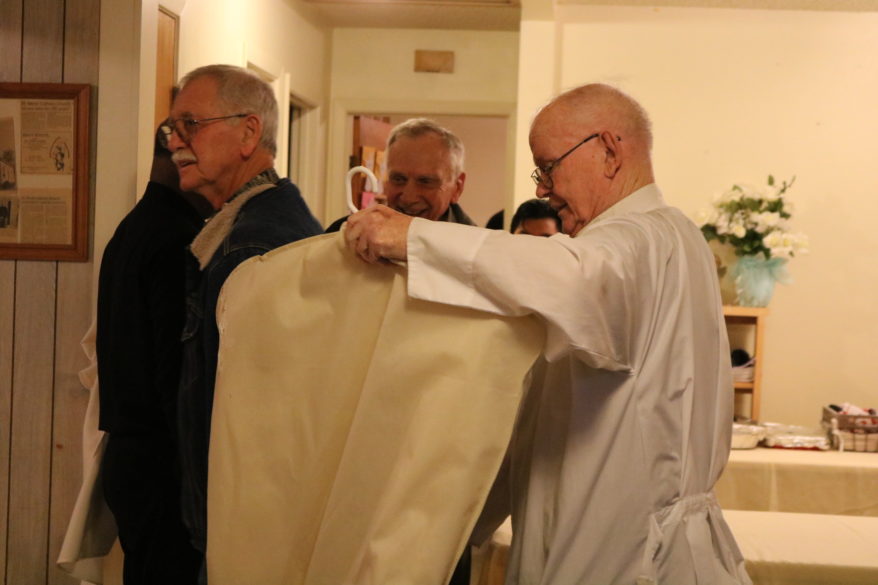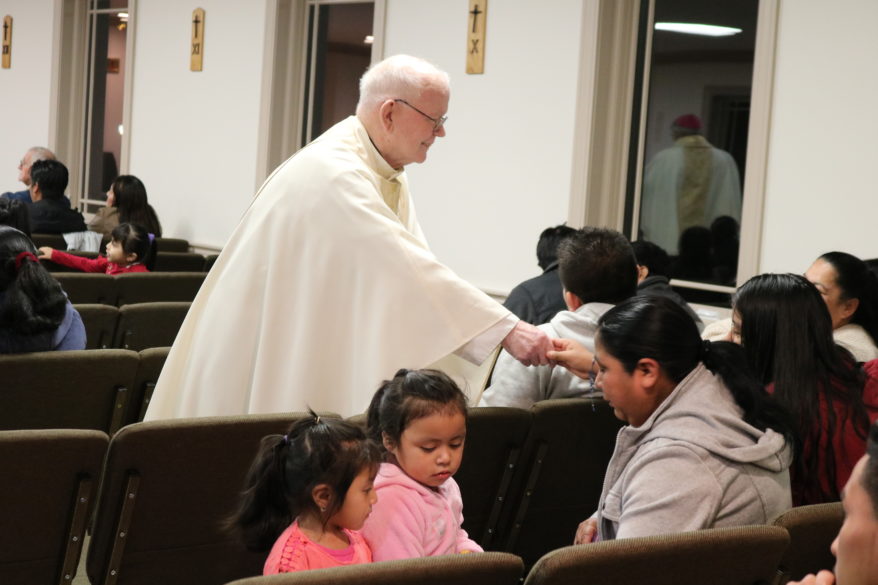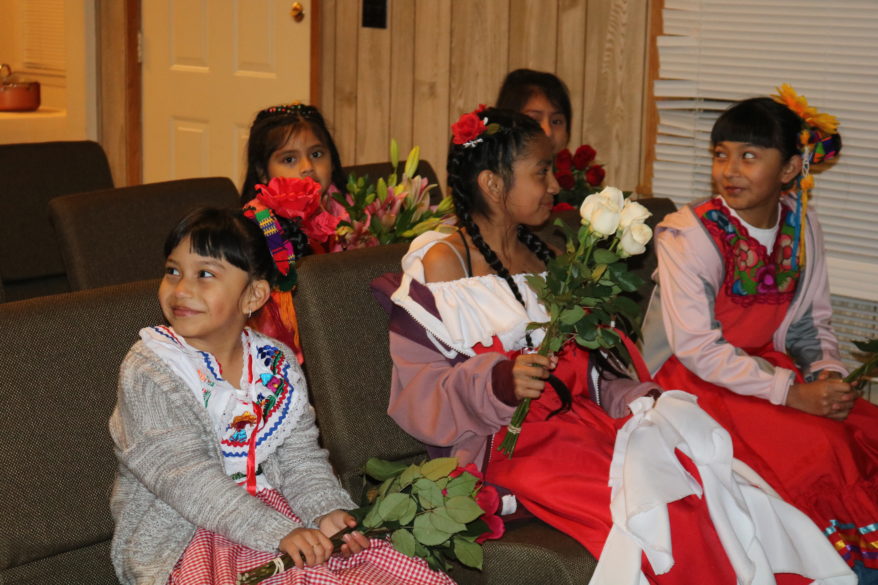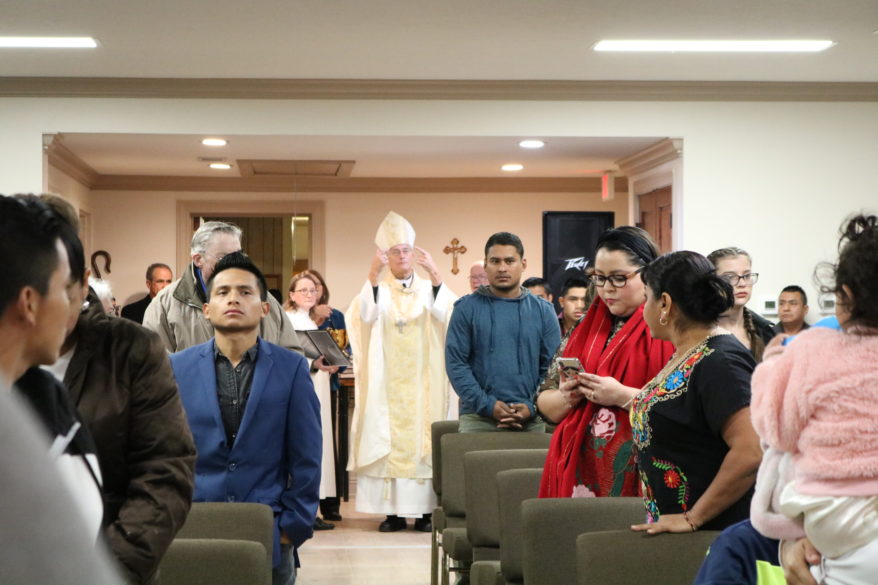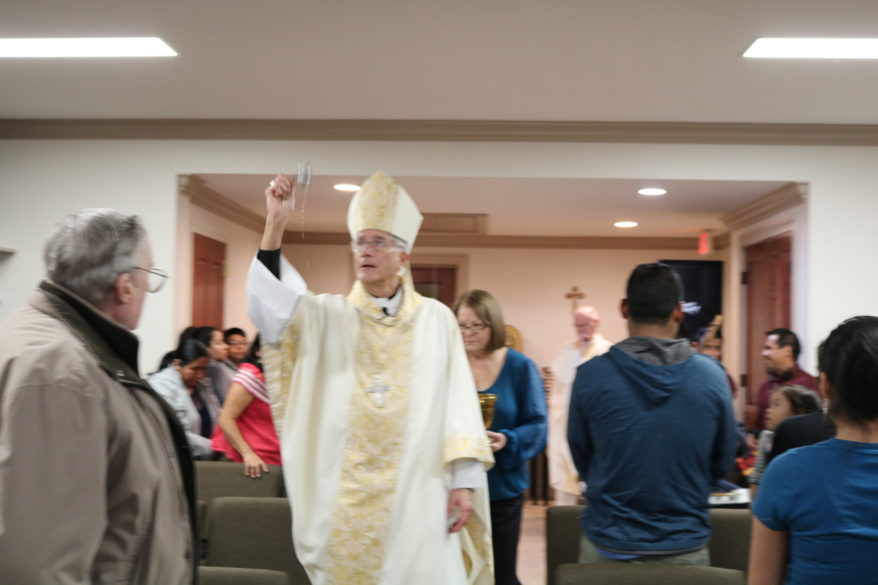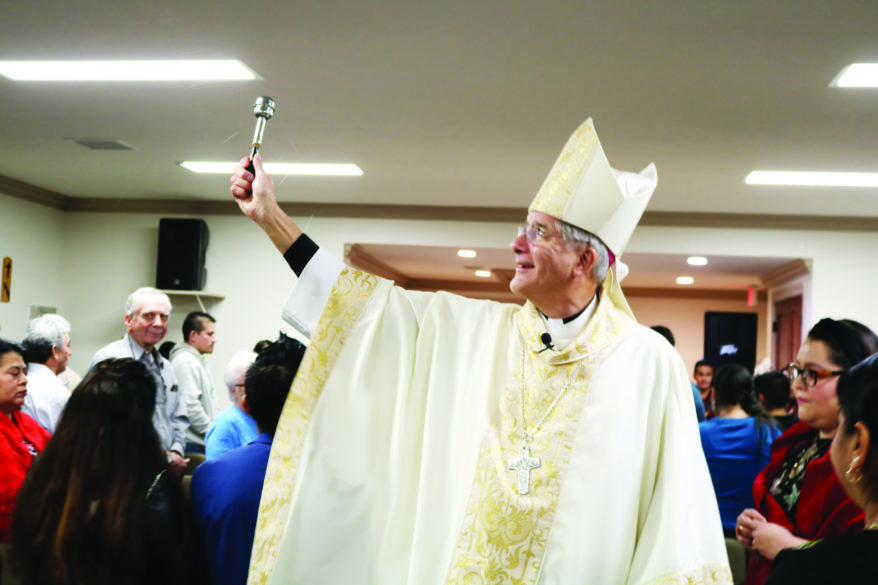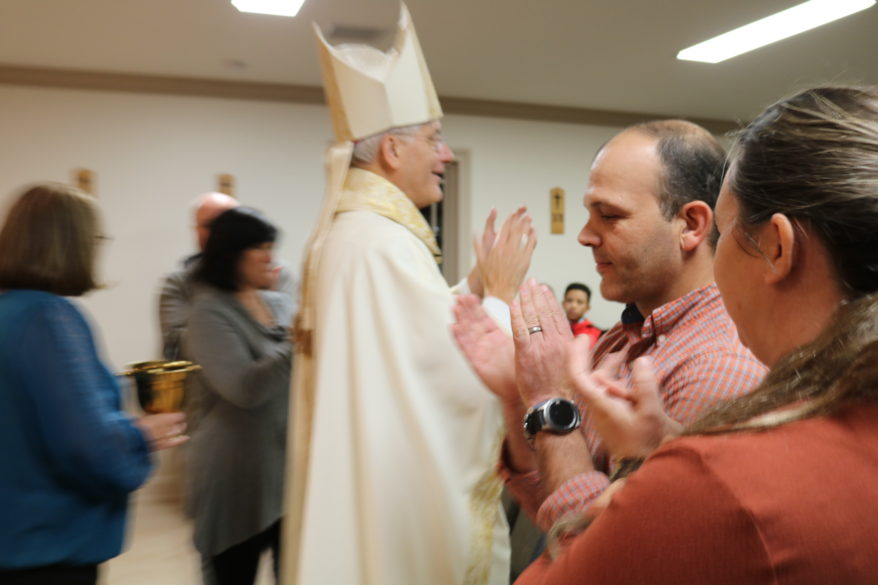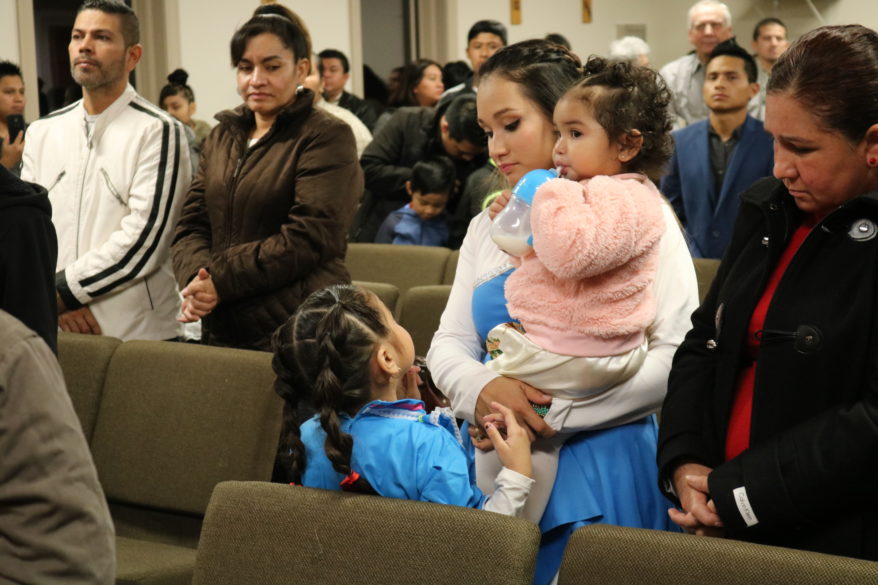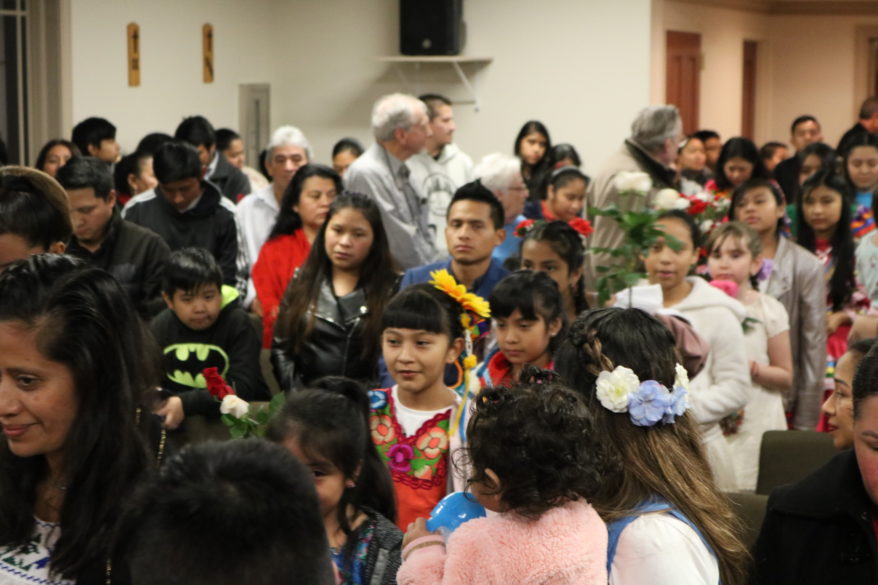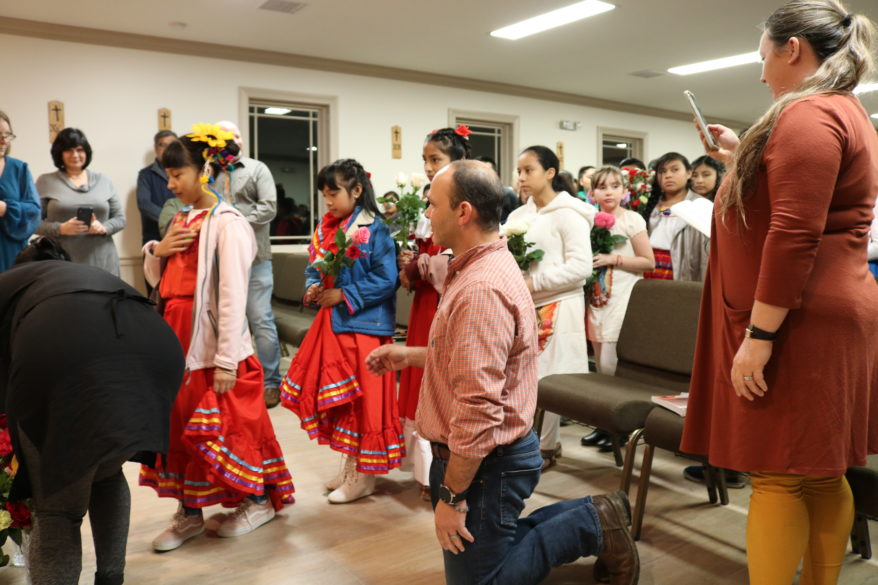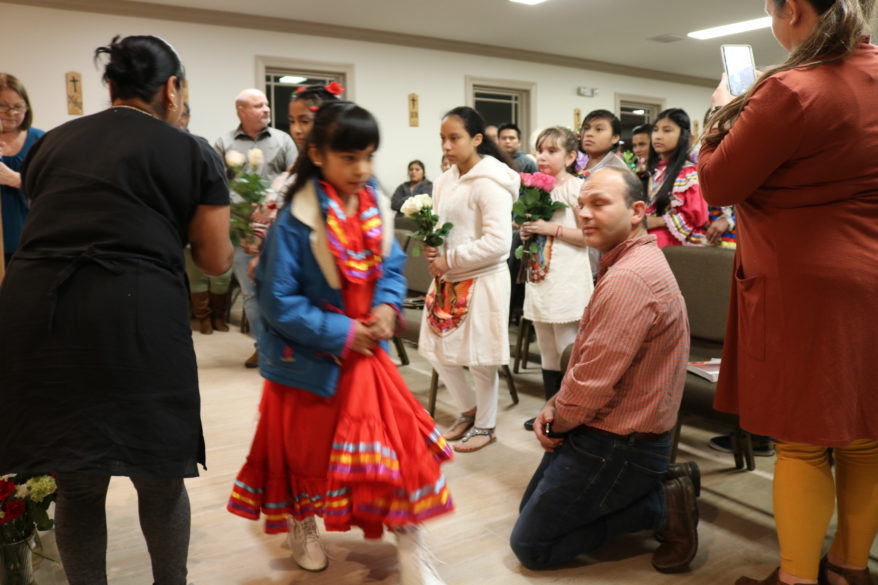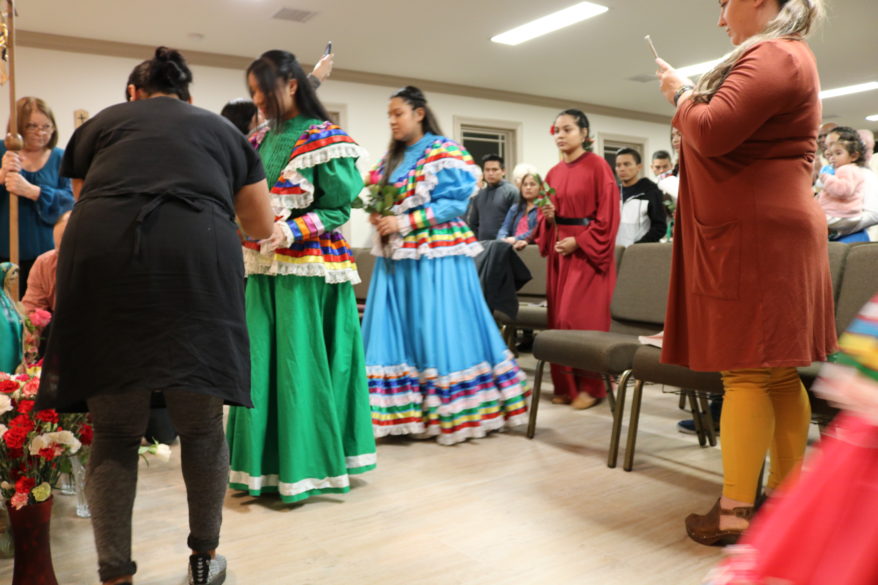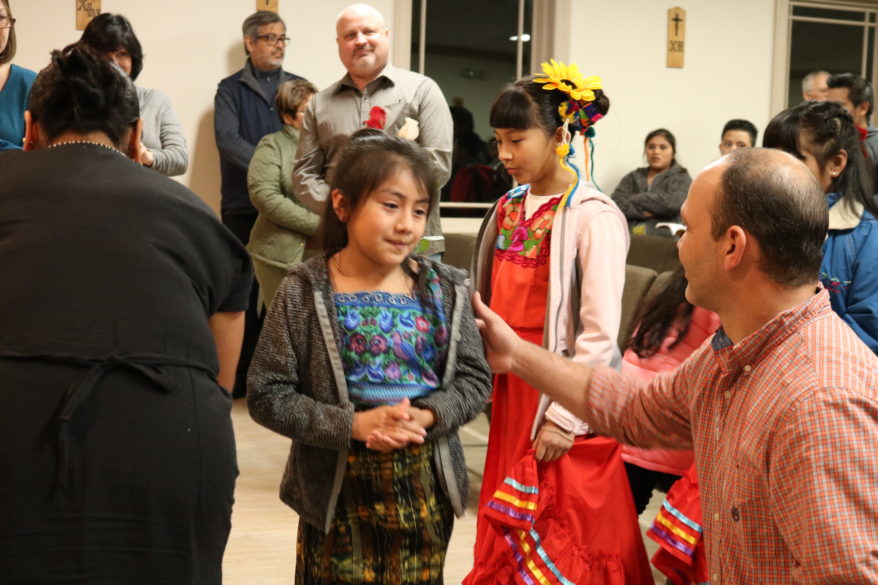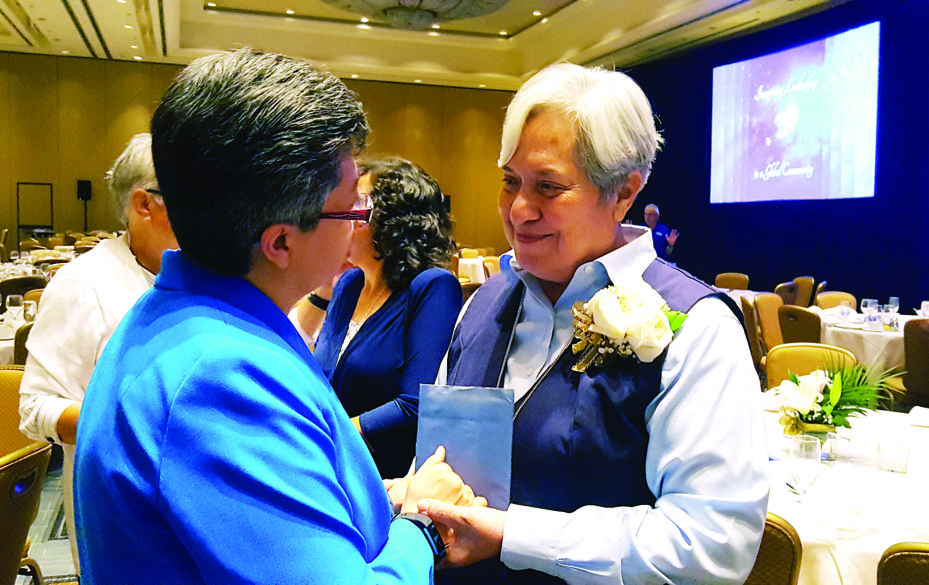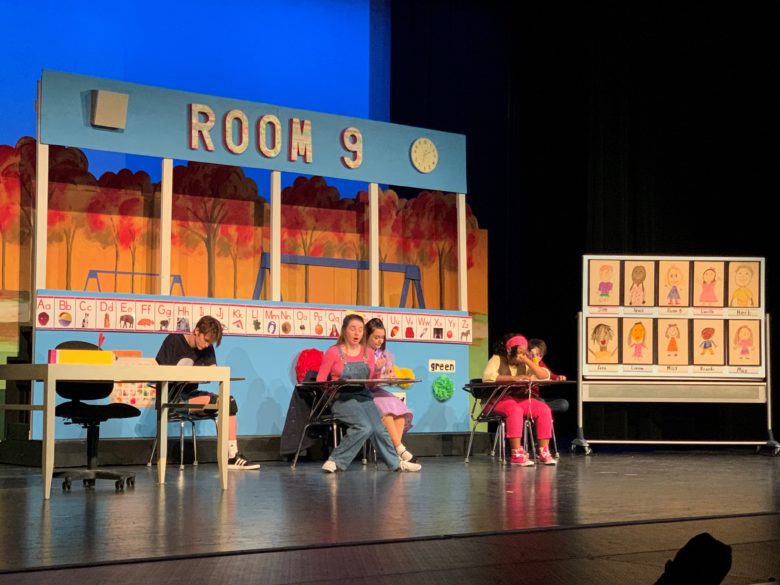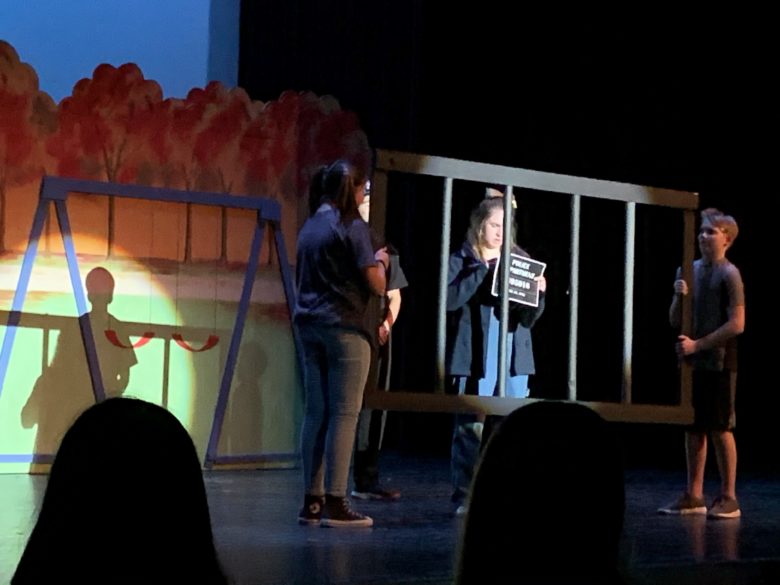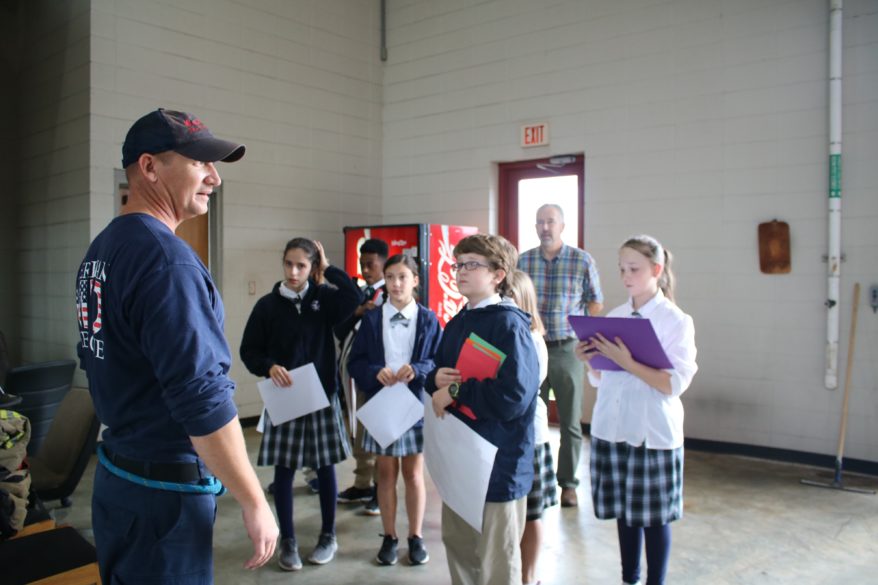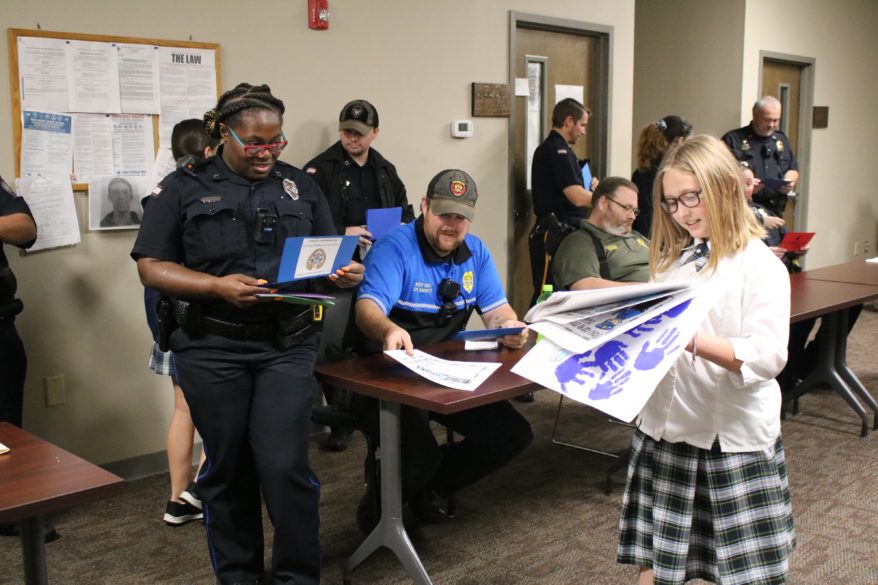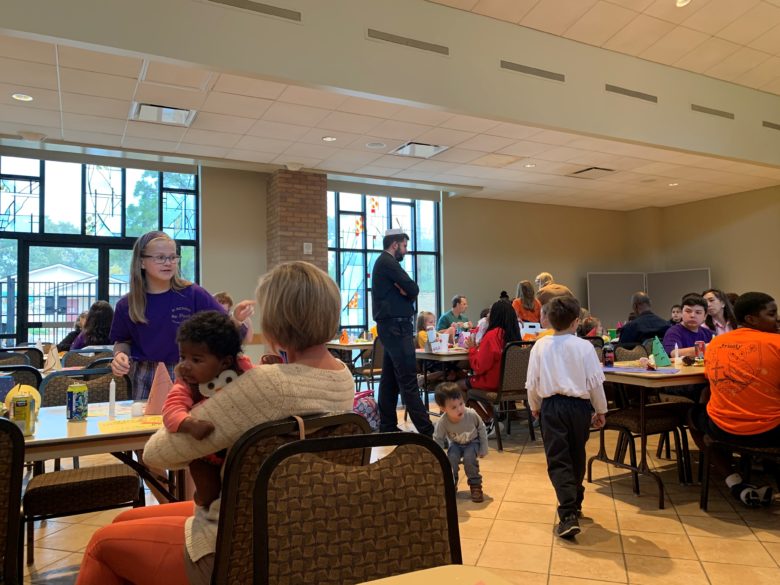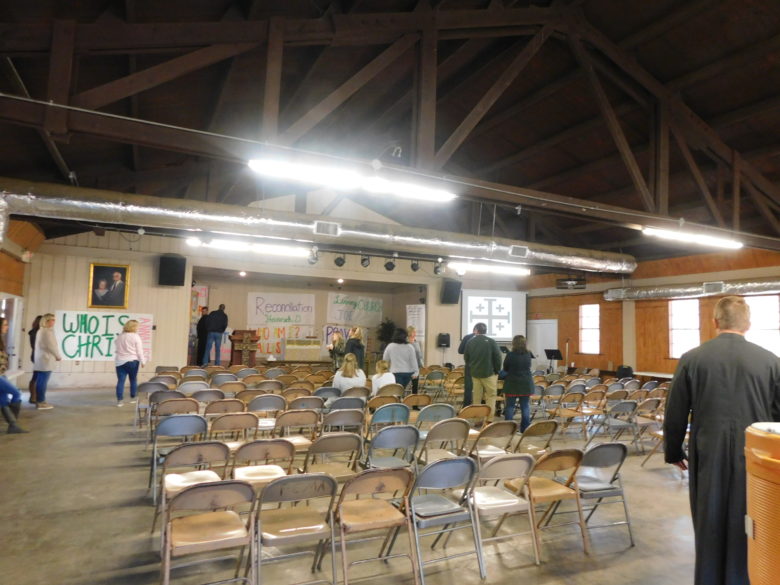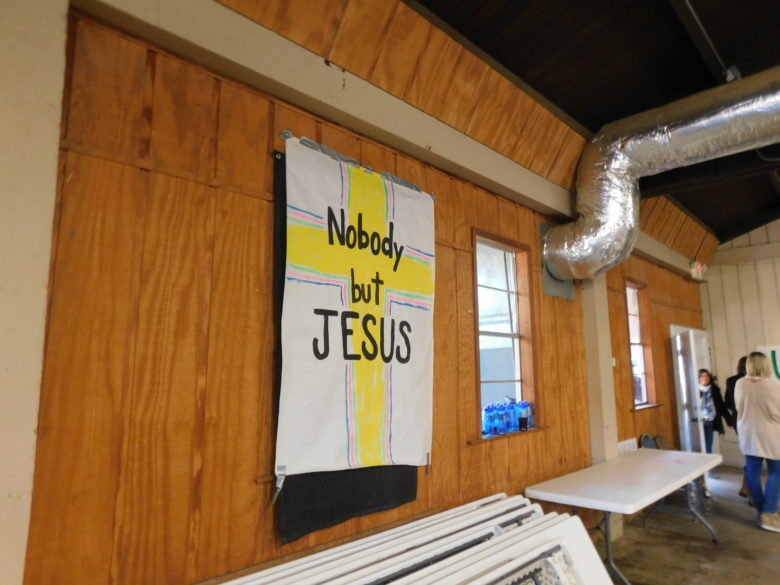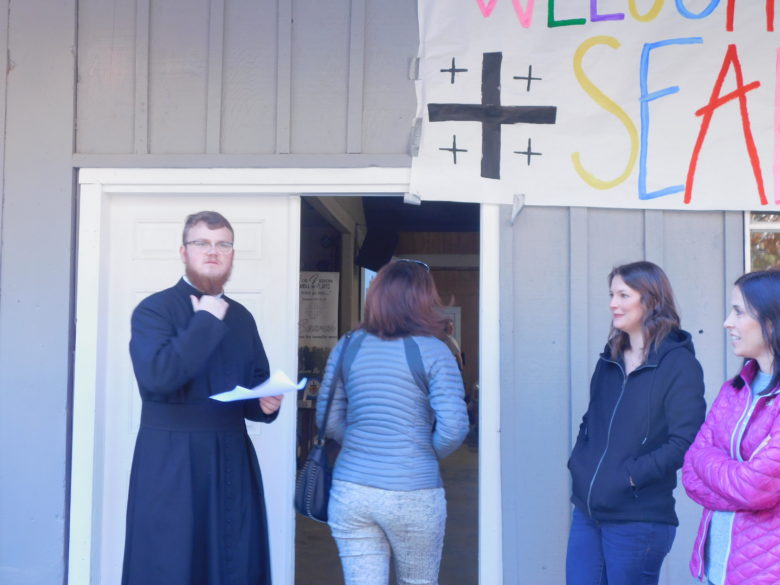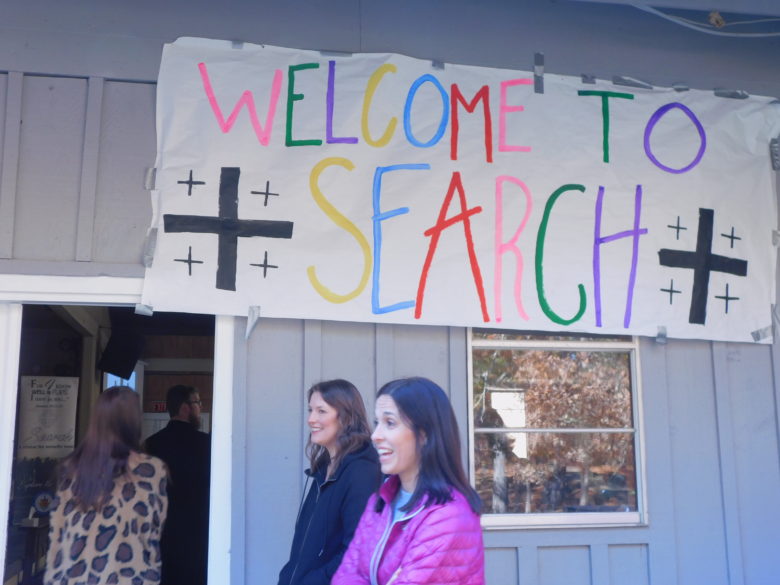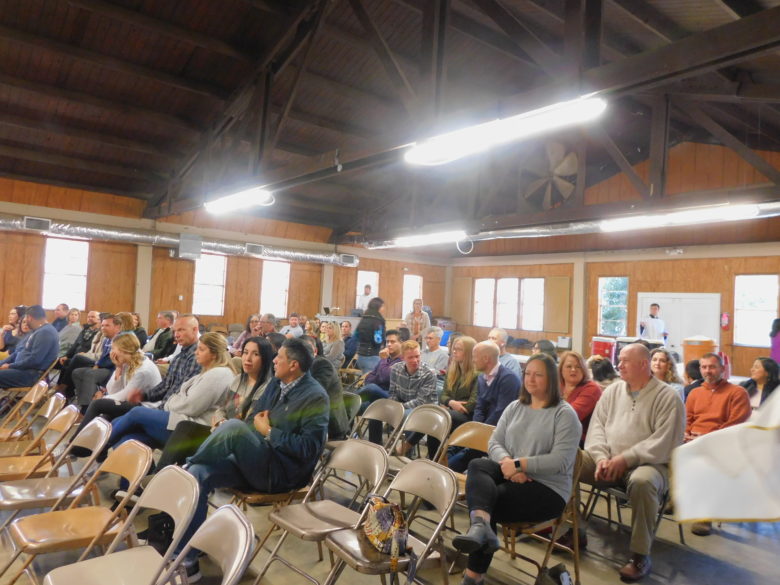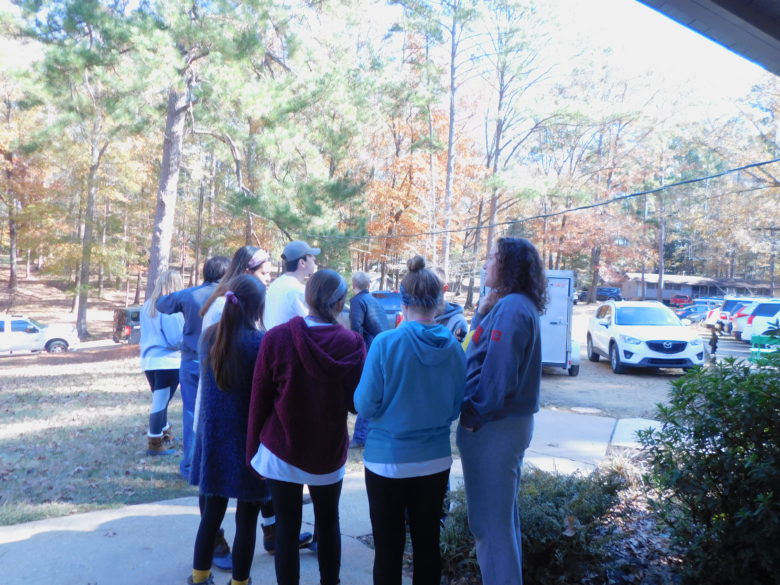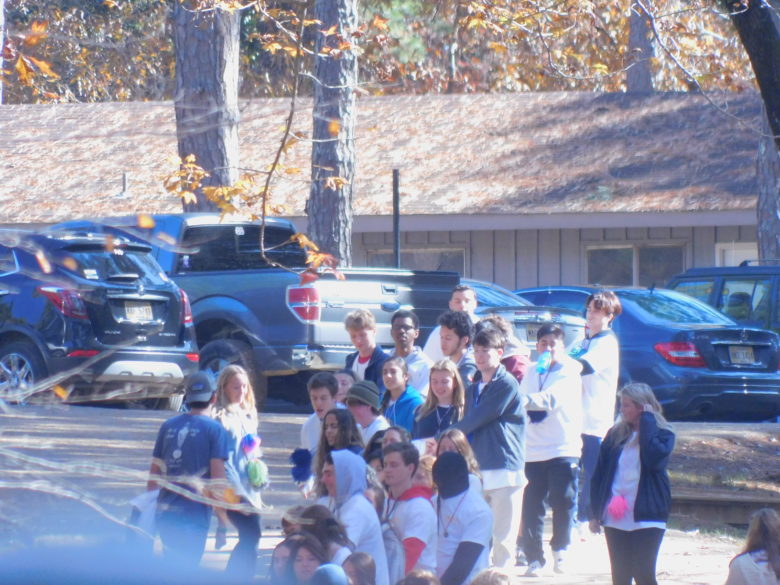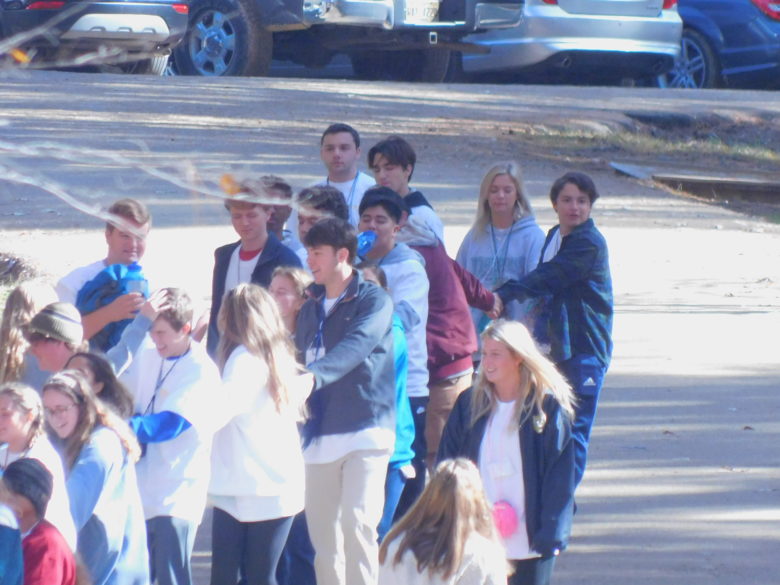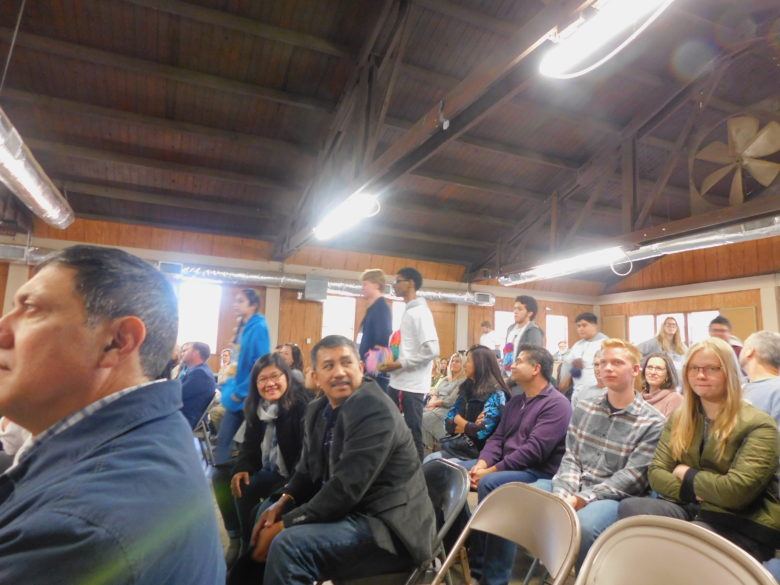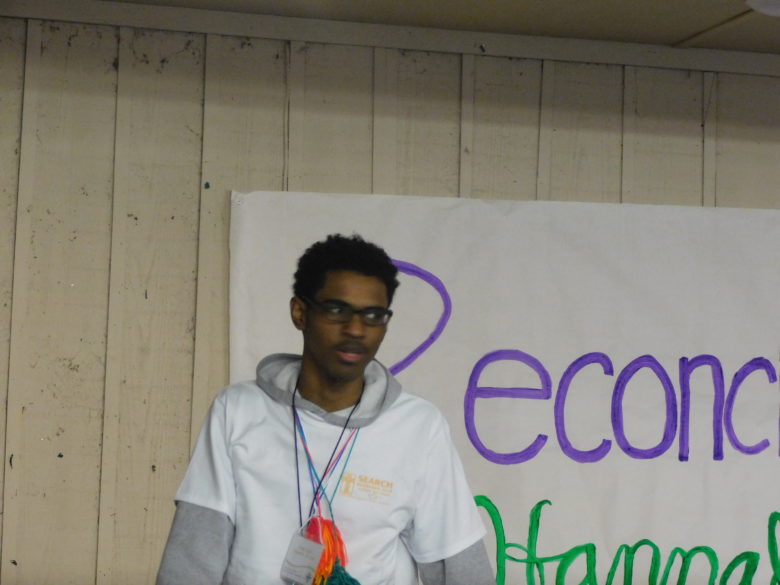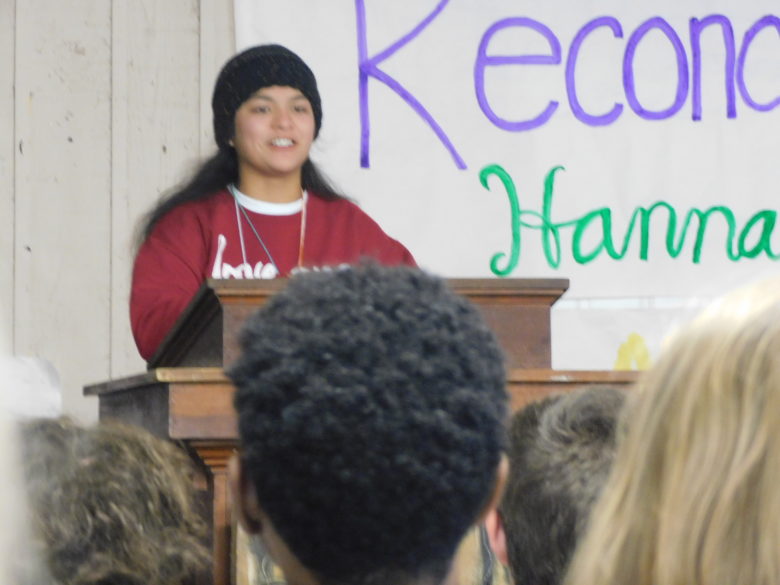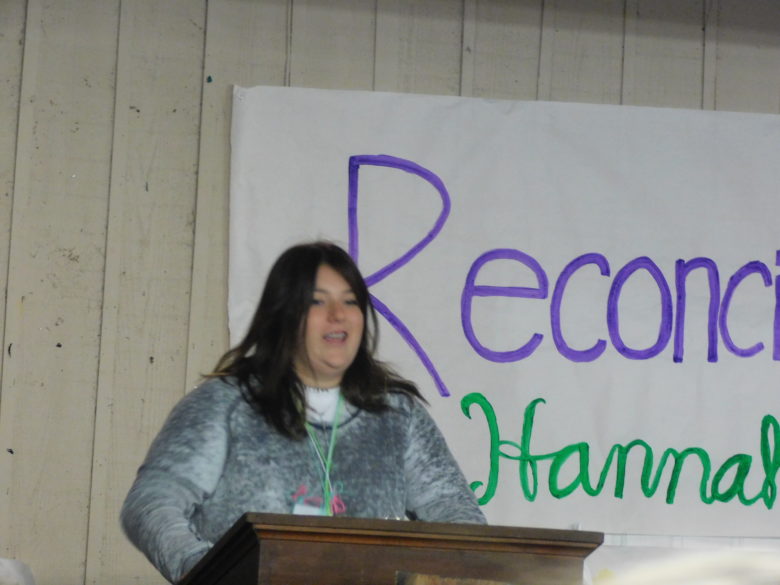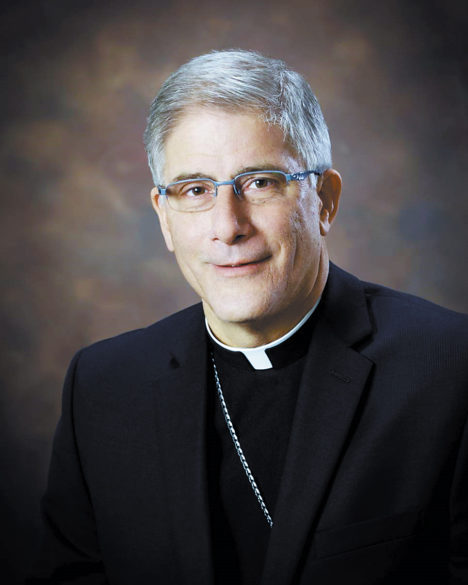Por Berta Mexidor
JACKSON – Millones de peregrinos se agrupan la noche del día 11 de diciembre frente a la Basílica de Nuestra señora de Guadalupe, para saludar a la patrona de las Américas. Miles de peregrinos acampan frente a la Basílica. Se crea un desorden de amor, fe y alabanza que solo una virgen puede organizar y celebrar con éxito.
Cada año se repite el mismo amor por la madre de Dios, compartido por millones de Marianos alrededor del mundo. Cuando las puertas se abren, miles de peregrinos cantan Las Mañanitas y fuera de la Basílica comienza la fiesta, desfile de colores, danzas y música, para la Virgen de Guadalupe. Con ese mismo ánimo, millones de mexicanos y fervientes guadalupanos alrededor del mundo celebran a la reina mestiza.
Aquí, en el centro sur de los Estados Unidos, los mexicanos han traído las tradiciones a la Diócesis de Jackson Mississippi y estas han sido adoptadas por la diversidad de nacionales y extranjeros que la pueblan:
Mañanitas: Algunas parroquias celebran la tradición de cantar Feliz Cumpleaños a la Virgen a medianoche o lo hacen entre las cuatro y cinco de la mañana, antes de ir a trabajar. Esta tradición se ha adaptado y en algunos lugares les llaman Nochecitas, cuando el canto del mariachi se hace en la tarde noche.
Representación de la Aparición: La historia de Juan Diego, la aparición de la Virgen y el milagro es representada tradicionalmente. Las nuevas generaciones escuchan, participan en la misma y, con el pasar de los años, continúan la tradición. Esta es una de las historias católicas mas reproducidas, contadas y conocidas por millones de católicos y no creyentes.
Peregrinación, Procesión y Fiesta: No solo en la capital mexicana se celebra en grande a la Virgen de Guadalupe, en San Luis de la Paz, Guanajuato, México, es una atracción los doce días de peregrinación, danza y acción de gracias, en vísperas al día 12. Noche tras noche, los pobladores, dueños de negocios, escuelas y peregrinos en general, desfilan por las calles en una reunión de fe. En el exilio, se siguen las fiestas en Facebook @ San Luis de la Paz.
En la diócesis de Jackson, cada parroquia adapta su fiesta, para que todos los parroquianos puedan pagar sus respetos. Algunos comienzan las Mañanitas a las 4 de la mañana y otros hacen una vigilia desde el día 11. Las celebraciones incluyen novenas y el Santo Rosario.
Niños: Los niños ya nacen guadalupanos y de adultos siguen la tradición. Para estas fiestas los padres visten a sus hijos representando a la Virgen o Juan Diego, vestidos con la imagen de la Guadalupe, en trajes típicos y de danzas flokloricas.
Danzas y Bailes Azteca, Concheros o Danza de la conquista: Según los sitios Wikipedia y el canal de youtube Folklor Maniacos, el documental “Concheros Somos” de Eduardo Guerra, y en conversacion con varios mexicanos, los Concheros es el nombre más emblemático de la danza, que reúne el sincretismo de la cultura indígena prehispánica con las tradiciones cristianas. Los frailes que llegaron a las Américas para la conquista espiritual ayudaron, en gran parte, a fundir los dos mundos en una cultura que ha transcendido el tiempo. Generalmente estas danzas son conocidas como: «danza de los concheros», «danza de la tradición», «danza azteca o mexica» o «danza de la conquista», adaptándose a las principales fiestas católicas.
Cuando se les pregunta a los grupos de danza creados en las Diócesis de Jackson y Memphis sobre el nombre dado, algunos se hacen llamar Danza Azteca, Matachines o Concheros. La regla se ha convertido en llamar a la danza según la parroquia a la que pertenecen, “Danza Azteca de la Catedral de San Pedro,” “Danza Guadalupana,” de Santa Teresa de Jackson,” y en Memphis están entre otros, “Matachines del Sagrado Corazón,” “Matachines “Guadalupana de San Felipe,” Matachines, “Guadalupana de la Ascensión” y “Matachines de San Miguel Arcángel.”
Concheros o Danza de la conquista: Esta es una de las danzas drama que ilustran la valentía de los guerreros durante la conquista y la aceptación del único Dios verdadero. Los concheros asumen su nombre por la concha, instrumento de diez cuerdas que se hace del caparazón del armadillo o ayotoste.
Esta danza también rememora las batallas frente a los conquistadores, y el momento en el que finaliza la conquista con la aceptación del Cristianismo y el reconocimiento de Jesús. Con este reconocimiento, los indígenas trasladan cantos, música, incienso, limpieza de sus templos, rosas, flores y fiestas a sus Dioses en un sincretismo respetuoso al nuevo Dios aceptado, creador del universo y a su madre la Virgen Maria.
Cada casa tiene su tradición particular con una u otra variación. Los danzantes dedican su tiempo, y por la fe, ésta los hace más fuertes ante la vida, como lo hacían lo guerreros. Para algunos Concheros el lema es “Unión, Conformidad y Conquista.“ Con esta actitud de firmeza y acción de gracias celebran en especial la devoción a la Virgen de Guadalupe.
El ritual de la danza incluye cantar a los cuatro vientos porque” nada queda del hombre, nada de mi fama aquí en la tierra, al menos flores y cantos, ellos perduran en la casa del dador de la vida,” del documental Concheros Somos de Eduardo Guerra, Produccion Ixtac.
Cuenta la leyenda que, durante la conquista, en 1531 a las espaldas del cerro de San Germán, hubo una batalla y al medio día, el sol se ocultó y salieron las estrellas, y en el cielo apareció una cruz, y Santiago Apóstol en un caballo blanco. Una voz se escuchó diciendo “Él es Dios” y este grito, dió por terminada la conquista para comenzar la conjunción de dos culturas.
Este grito es escuchado durante la danza. Con el mismo se lleva un sincretismo respetuoso que se ha acarreado por generaciones. Los concheros integran las imagines católicas, la adoración al Espíritu Santo y la fe en Jesucristo.
Matachines: Es una de las danzas que rescata la tradición indígena. Es una dramatización de la conquista, no solo la territorial, sino mas bien la conquista religiosa que siguió a la primera. La danza de Matachines representa la lucha y defensa, de la Virgen de Guadalupe, la fe católica y Jesucristo, ante los enemigos, con el uso de las armas ya conocidas por los indígenas.
Bailes Folclóricos: Las fiestas de celebración a la Virgen siempre incluyen tradiciones. Allí donde no hay Danza Azteca o Matachines, los guadalupanos bailan al son de canciones mexicanas del folclore, vistiendo hermosos trajes típicos del país.
Mariachis: Es el grupo musical emblemático de México y es usado para el canto de la Mañanitas en días de cumpleaños. En vivo o grabado, esta canción se repite en cada una de las celebraciones a la Virgen de Guadalupe.
De una forma u otra, de parroquia a parroquia y de país en país , estos son algunos nombres, términos y significado de conceptos, trajes, instrumentos y objetos usados en las danzas, que algunos saben y otros usan con mucho respeto:
Kalpulli: Casa de tradición que organiza la danza y guarda la tradición de sus ancestros.
Danza: Es oración en movimiento
Jerarquia: Cada casa tiene un liderazgo y los Jefes o Capitanes son los líderes de cada casa. Ellos son los ancianos o danzantes con más tiempo en cada casa o por la elección de sus miembros e incluye títulos como “…‘Temachtiani,’ o el Maestro, ‘Tlahtoani.’ portador de palabra” la cabeza o líder; ‘Jefe Tlelyolotl,’ quien pone la disciplina en la ceremonia; Sargento ‘tlakatekatl,’ el portador de la bandera; ‘Pantli,’ la mujer portadoras de sahumerio o incensario ‘sahumadora’, quien toca el tambor ‘Huehuetl,’ quien toca el caracol ‘Atecocolzin,’ quien porta el Agua Atl’ y quien porta la Tierra ‘Tlali’…,” de acuerdo con un documento titulado “Danza Azteca del Kalpulli in Teotl Ilhuikatl” y publicado online.
Danzante: Cada casa o Kalpulli tiene la tradición de recibir nuevos danzantes que luego, a través de los años, se convertirán en sus líderes, por su constancia y sentido de permanencia. Los nuevos danzantes son llamados “macehualzin-macehual” y al culminar varias pequeñas responsabilidades como su asistencia y constancia, recibirán el nombre de “macehualzin.”
Jefe de la danza o “Tlelyolotl:” Determina los movimientos, compas y coreografía, que representara siempre la lucha por la victoria.
Instrumento musical: Arma que “cada guerrero debe conquistar para su desarrollo.”
Ayoyotes: Huesos de semilla, en pies y manos, son el “fuego de la tradición personal” del alma del guerrero.
Estandarte: Es el “arbol de la tradición” y la representación del protector de la danza, en este caso, la Virgen de Guadalupe.
Guitarra de Ayotoste: El ayotoste o tortuga o armadillo representa al espíritu del agua.
Incensiario: Es la ofrenda a la divinidad. En estos caso se usa el mismo incienso usado en la iglesia. Se mantiene encendido durante toda la danza.
Penacho: Es la “devota entrega a la voluntad de lo alto y las plumas son los hilos que lo atan a la vida de cada danzante. Cada pluma por cada victoria ante las pruebas recibidas durante la vida y con las que se hace más fuerte.
Los ayoyotes, ayoyotl, cascabeles aztecas o huesos de fraile: Son utilizados como un instrumento musical que acompaña el baile azteca de México. Son usados en el cuerpo de los danzantes, principalmente en los tobillos y manos. Los ayoyotes son nueces secas de un árbol con el mismo nombre ayoyote o chachayote (chachayotl). Los danzantes aquí o mandan a buscar todos sus vestuarios a Mexico o hacen sus propios trajes, como María Aurora García, quien en Forest prepara además a los jóvenes en la coreografia de la danza.
El caracol o atekokolzin: Su toque invoca al amor y la fe a través de la presencia de los ancestros familiares y locales, a la vez que llama a los guerreros por disciplina.
El tambor, el “huehuetl:” Es el corazón de la eternidad y representa el sonido del corazón de los guerreros para la guerra. El término “atabal” es de origen africano, y seguramente los españoles lo escucharon de los esclavos africanos que tuvieron a su servicio en las islas del archipiélago caribeño. El nombre dado por los pobladores del centro y valle de México a este instrumento es huehuetl, que se relaciona con la palabra huehueh: anciano, viejo.
Arco y flecha: Armas con las que defender a la Virgen, a su hijo Jesucristo y la fe Católica.
